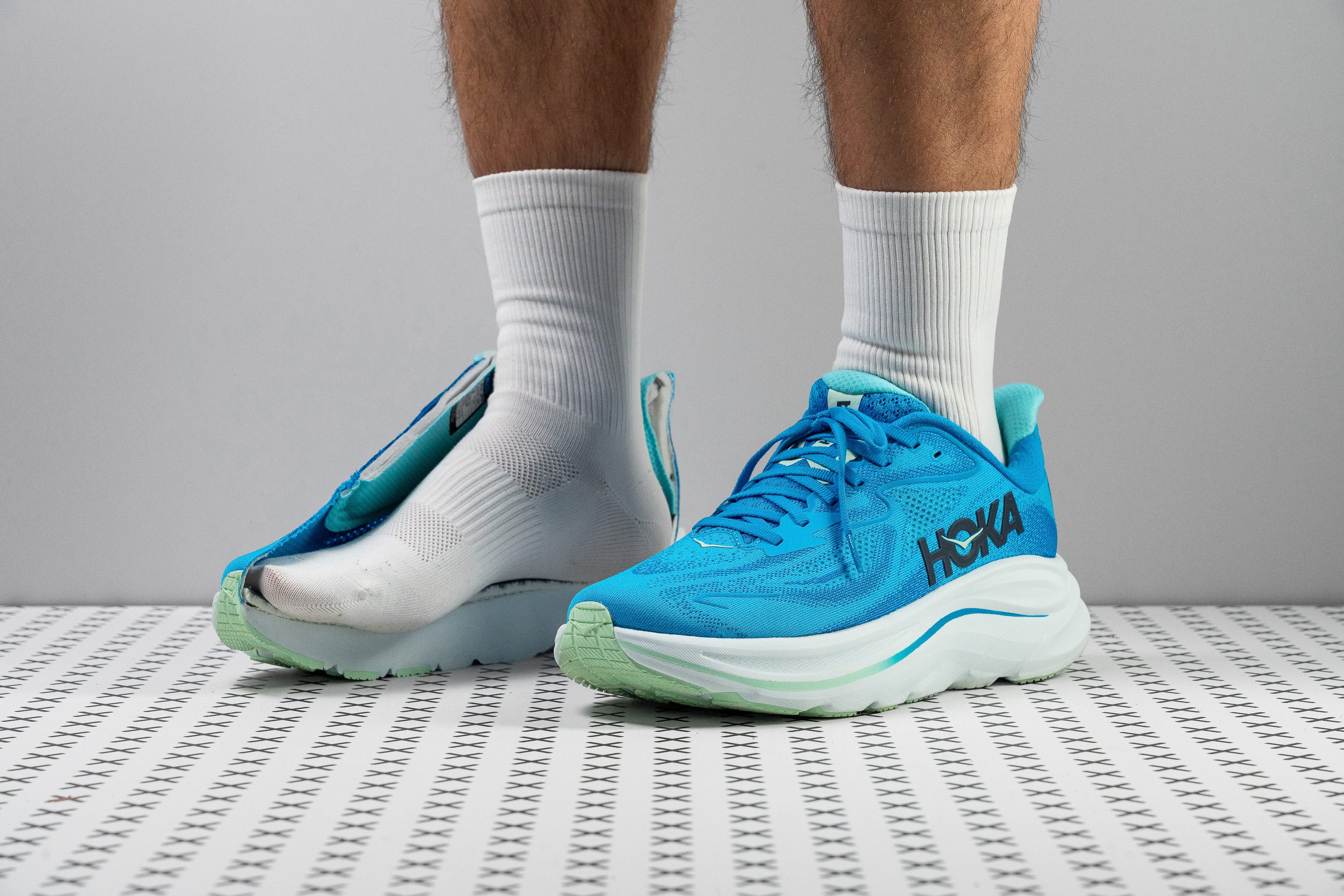Our verdict
- Top pick in best Hoka running shoes
- Top pick in best cushioned running shoes
Pros
- Superb joint protection
- Wider toebox improves toe splay
- Comfortable upper
- Stable ride despite its high stack height
- Works well for heel strikers
- Ideal for long runs
- Versatile for daily walking or jogging
- Achilles-friendly heel collar design
- Traction improvements
Cons
- Needs a better foam ASAP
- Notable weight gain from v9
- Feels more Bondi than Clifton
- Non-gusseted tongue
Audience verdict
- Top 20% in Hoka running shoes
- Top 25% in running shoes for walking
- Top 2% most popular running shoes
Comparison
The most similar running shoes compared
+ + Add a shoe | |||||
|---|---|---|---|---|---|
| Audience score | 88 Great! | 92 Superb! | 74 Bad! | 91 Superb! | |
| Price | £140 | £160 | £170 | £135 | |
| Pace | Daily running | Daily running | Daily runningTempo | Daily running | |
| Arch support | Neutral | Neutral | Neutral | Neutral | |
| Weight lab Weight brand | 9.7 oz / 275g 9.8 oz / 277g | 9.9 oz / 281g 10.2 oz / 289g | 9.3 oz / 264g 8.9 oz / 252g | 10.5 oz / 298g 11.5 oz / 325g | |
| Drop lab Drop brand | 12.4 mm 8.0 mm | 12.7 mm 6.0 mm | 9.5 mm 5.0 mm | 13.9 mm 10.0 mm | |
| Strike pattern | Heel | Heel | HeelMid/forefoot | Heel | |
| Size | True to size | Slightly small | - | True to size | |
| Midsole softness | Soft | Soft | Soft | Soft | |
| Difference in midsole softness in cold | Small | Small | Small | Small | |
| Toebox durability | Good | Decent | Decent | Decent | |
| Heel padding durability | Good | Good | Good | Good | |
| Outsole durability | Decent | Good | Good | Decent | |
| Breathability | Moderate | Moderate | Moderate | Moderate | |
| Width / fit | Medium | Medium | Narrow | Medium | |
| Toebox width | Medium | Medium | Narrow | Narrow | |
| Stiffness | Moderate | Moderate | Stiff | Moderate | |
| Torsional rigidity | Stiff | Stiff | Stiff | Stiff | |
| Heel counter stiffness | Moderate | Stiff | Flexible | Moderate | |
| Rocker | ✓ | ✓ | ✓ | ✓ | |
| Heel lab Heel brand | 44.4 mm 42.0 mm | 44.1 mm 44.0 mm | 42.9 mm 44.0 mm | 42.5 mm 45.0 mm | |
| Forefoot lab Forefoot brand | 32.0 mm 34.0 mm | 31.4 mm 38.0 mm | 33.4 mm 39.0 mm | 28.6 mm 35.0 mm | |
| Widths available | NarrowNormalWideX-Wide | NormalWide | NormalWide | NormalWideX-Wide | |
| Orthotic friendly | ✓ | ✓ | ✓ | ✓ | |
| Season | All seasons | All seasons | All seasons | All seasons | |
| Removable insole | ✓ | ✓ | ✓ | ✓ | |
| Ranking | #118 Top 32% | #16 Top 5% | #353 Bottom 4% | #25 Top 7% | |
| Popularity | #4 Top 2% | #132 Top 36% | #72 Top 20% | #8 Top 3% |
Who should buy
After testing the Hoka Clifton 10 in the lab and on the road, we believe it's perfect for:
- Runners who found the Clifton 9 undercushioned and wanted a thicker, more protective ride.
- Heel strikers needing a stable, hard-wearing daily trainer with a comfort-first design.
- Marathoners looking for a go-to option for long, slow miles that works for casual use too.
- Those who skipped past versions of the Clifton due to a narrow toebox—this one finally fixes that.
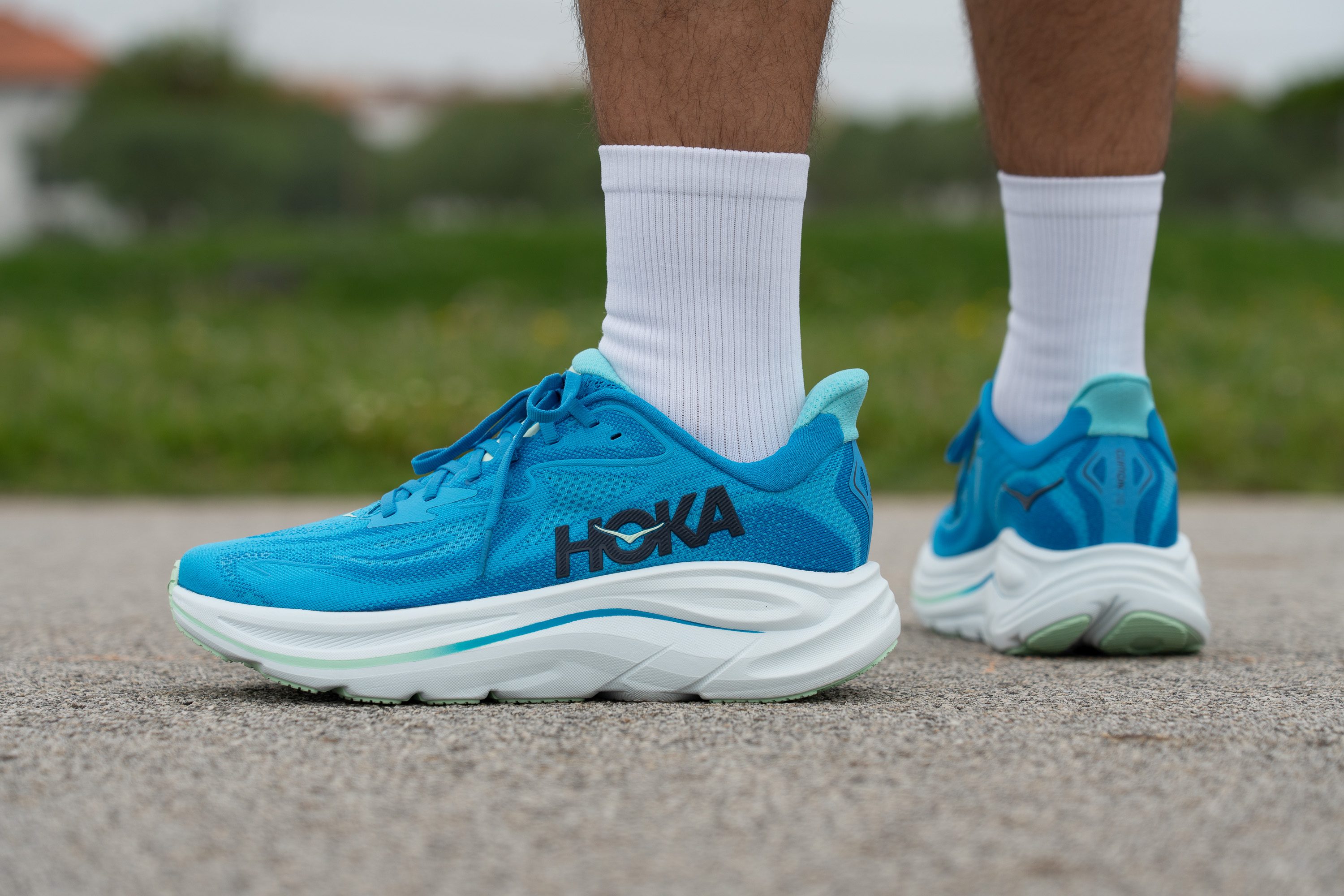
Who should NOT buy
The biggest letdown of the Clifton 10 is its midsole. Over two years since version 9, it still relies on plain CMEVA foam while rivals move toward high-performance compounds like those in the ASICS Novablast 5 or Adidas Adizero EVO SL.
We also feel Hoka may have overdone the stack, pushing it past 40 mm. That’s a big leap from earlier versions, and many runners might prefer something more balanced like the Nike Pegasus 41 or Saucony Ride 18.
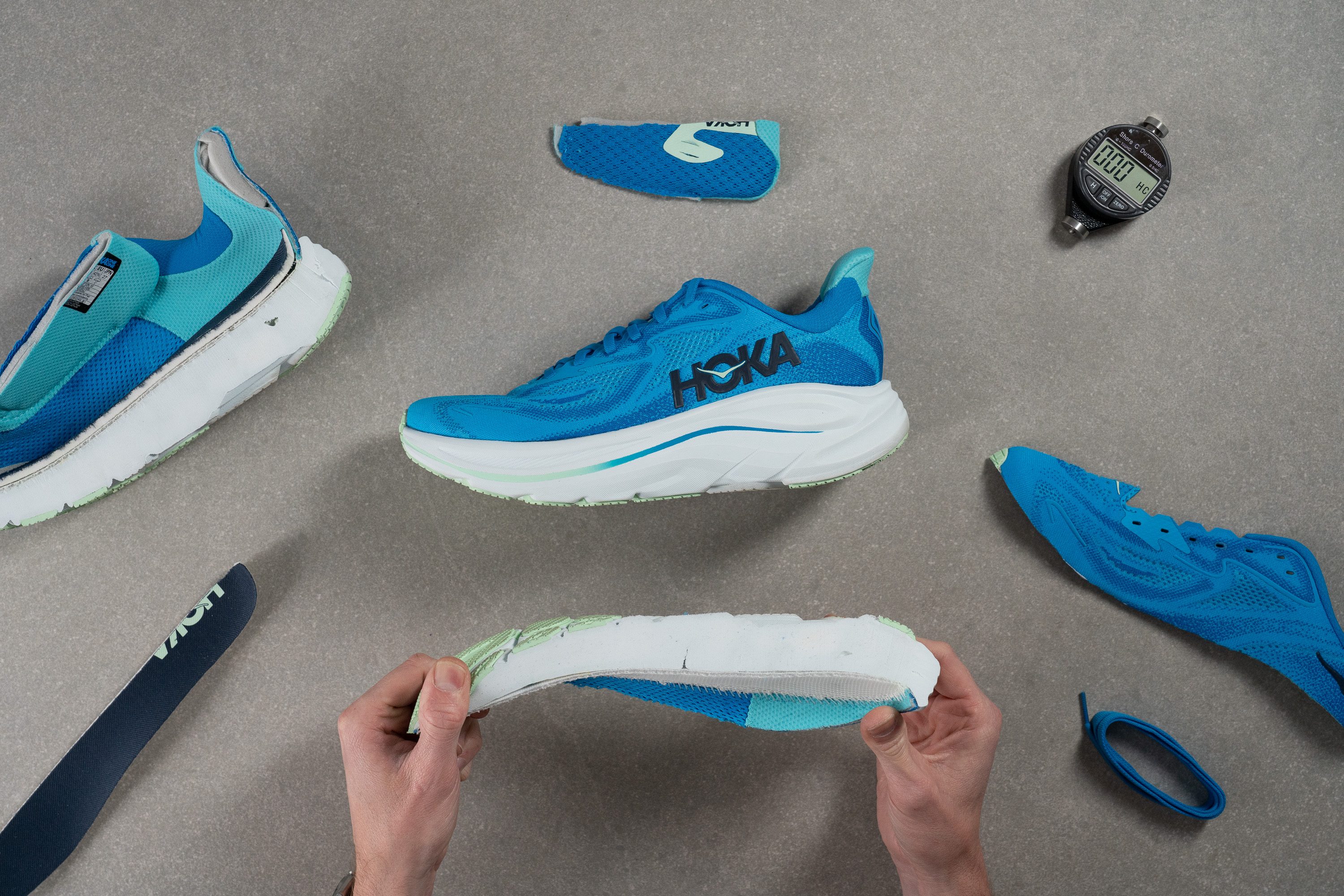
On top of that, the extra foam brings noticeable weight gain. For runners who prioritise a lightweight feel, the Hoka Mach 6 might actually be the Clifton 10 that never existed.
Cushioning
Shock absorption
The Clifton 10 brings maxed-out shock absorption, marking a clear shift from its predecessor. While version 9 felt more like an average daily trainer with a closer-to-the-ground ride, this one turns into a Bondi-like, cushion-loaded beast with up to 147 SA.
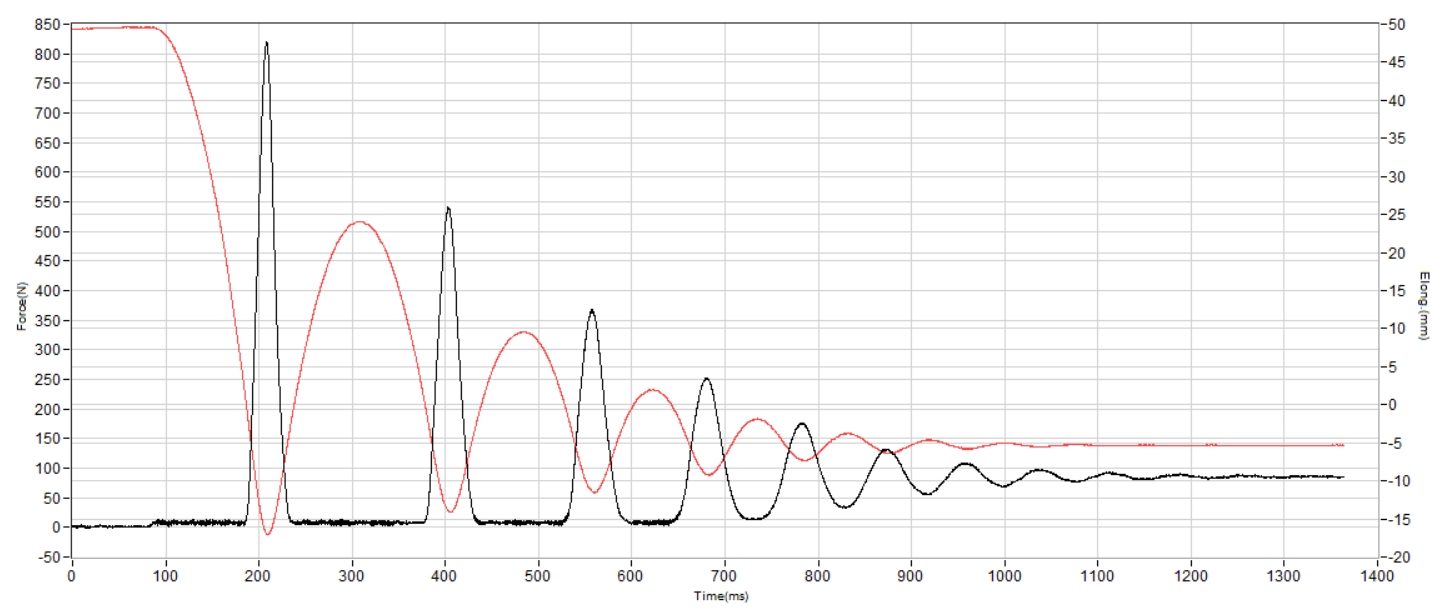
| Hoka Clifton 10 | 147 SA |
| Average | 129 SA |
Energy return
But the upgrades didn’t extend to energy return, and that’s a major letdown. Hoka skipped the move to supercritical foam and stuck with the same old compression-molded EVA, which still feels dull. It even falls behind the lab average with just 52.3% of bounce, and that's definitely not good news.
| Hoka Clifton 10 | 52.3% |
| Average | 58.6% |
Heel stack
The change in stack height from the Clifton 9 to 10 is absolutely staggering. It jumps from 32.7 mm to a sky-high 44.4 mm, and this is an ultra-cushioned leap we didn’t expect. We found that this is even more than the 42 mm HOKA lists in their official spec sheet, though it's not unusual that our lab measurements differ from their numbers.
As a result, the shoe shifts from being a moderately-cushioned daily trainer to a full maximalist beast. In fact, this shoe is higher than the Bondi 9, which used to be Hoka's max-stack daily trainer.
But why this change? It’s all about selling more shoes—this shift clearly mirrors the trend dominating the market, where today’s best-selling daily trainers now hover around the 40 mm mark.
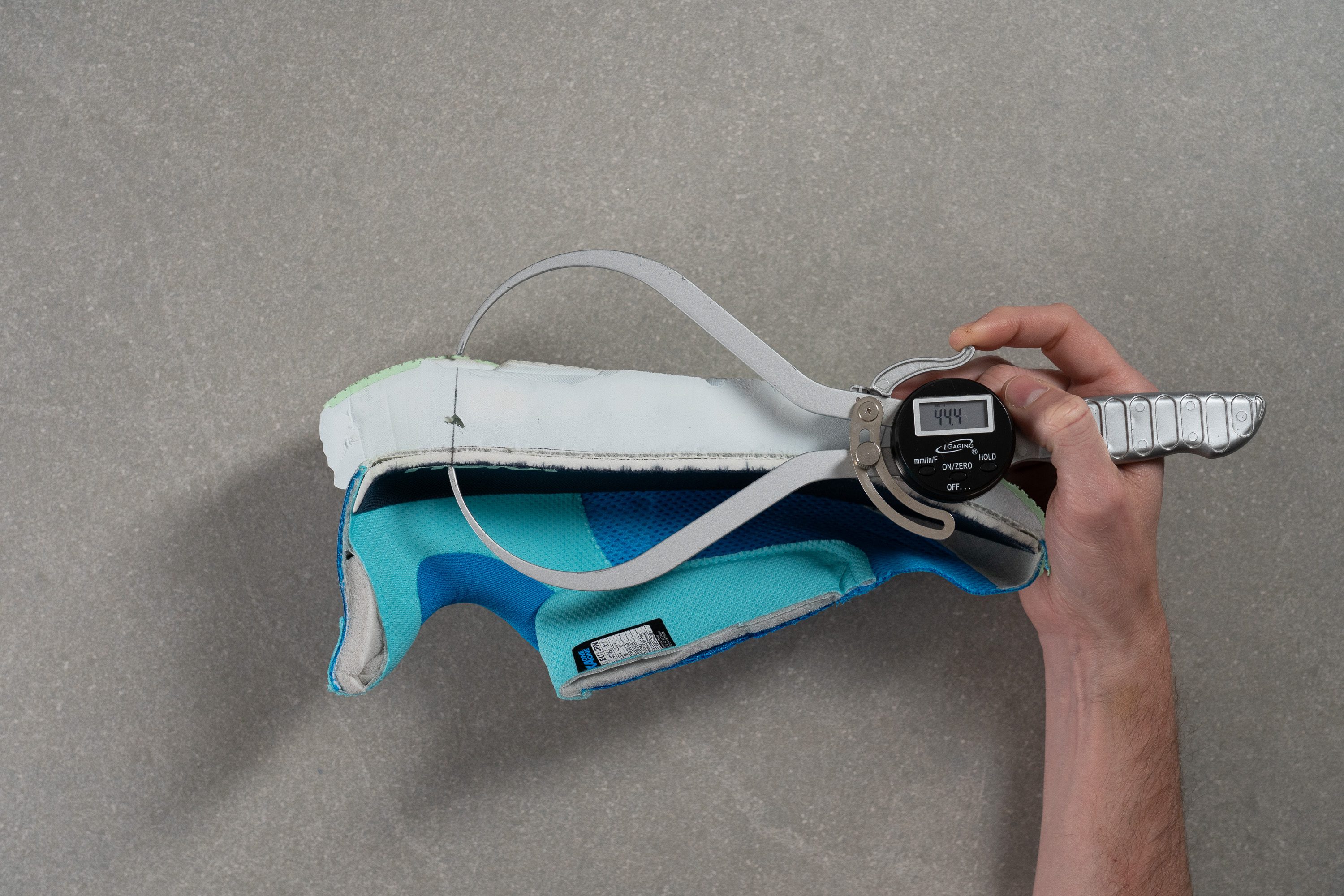
| Hoka Clifton 10 | 44.4 mm |
| Average | 34.7 mm |
Forefoot stack
The forefoot also comes pretty high at 32.0 mm, though it feels less dramatic than the heel. Still, no matter how you land, we found the impact absorption to be top-tier—but at the cost of ground feel.
This ultra-thick setup delivers massive joint protection yet removes all sensory feedback, turning it into a double-edged setup. In fact, runners who enjoy a feedback-rich, ground-connected ride may find the Clifton 10 overly muted.
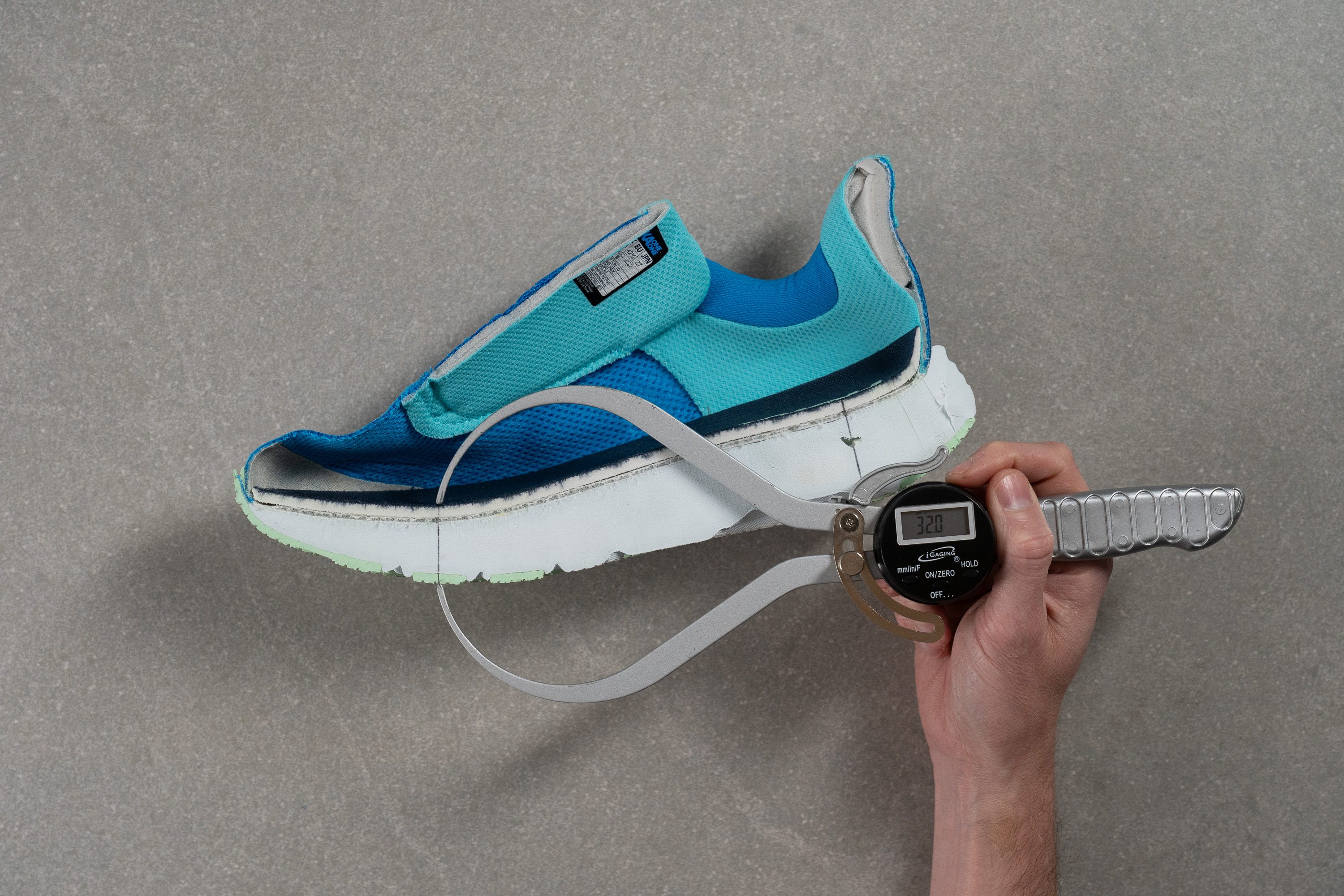
| Hoka Clifton 10 | 32.0 mm |
| Average | 26.1 mm |
Drop
We measured the drop in our lab using the World Athletics-specified points. However, Hoka appears to calculate it from farther back, closer to the midfoot. That likely explains the result we found: a steep 12.4 mm drop instead of the stated 8 mm.
This marks a major shift from earlier versions, as the Clifton had always been a medium-drop shoe with Hoka listing 5 mm in the specs. Now it leans toward heel strikers more than ever before.
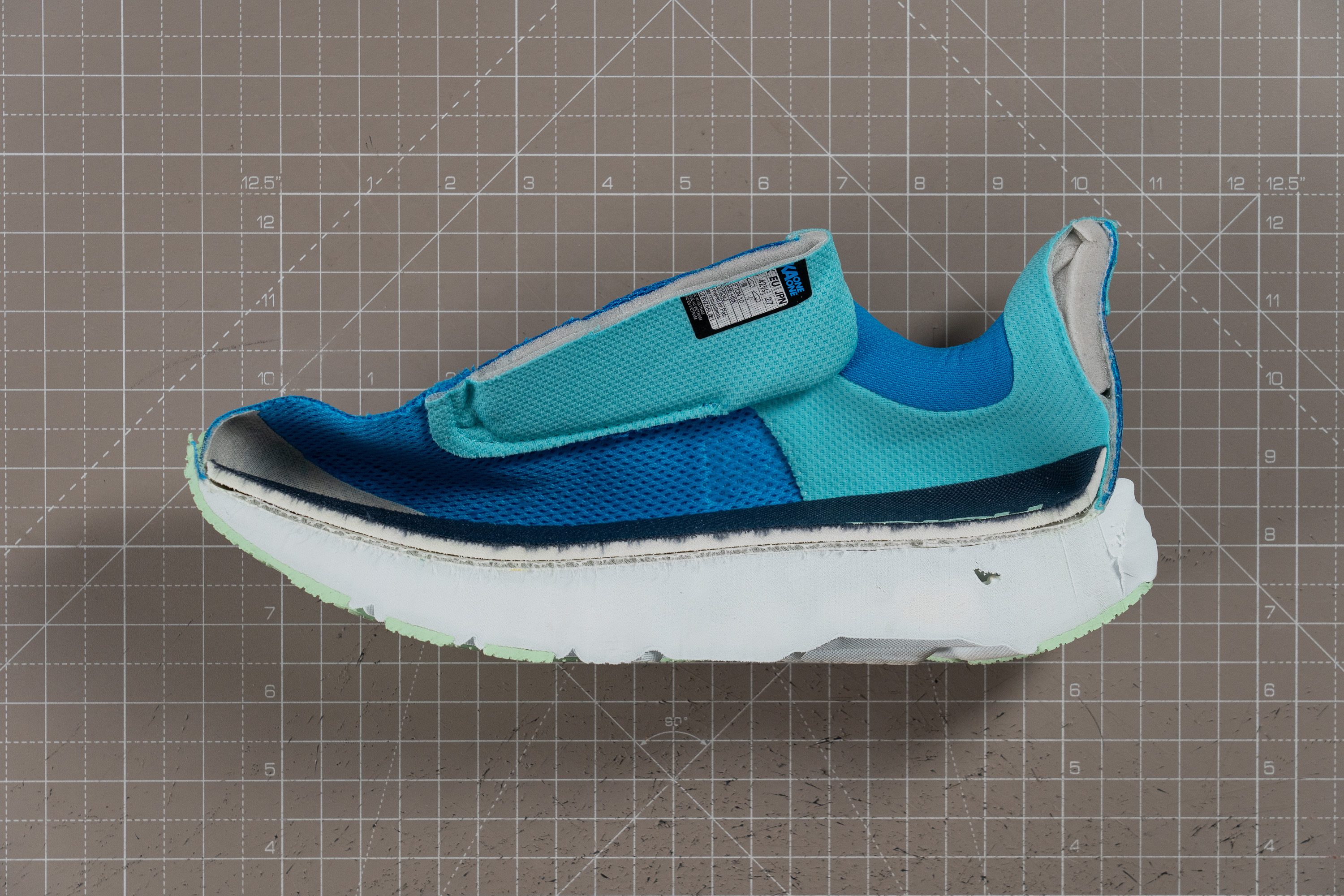
| Hoka Clifton 10 | 12.4 mm |
| Average | 8.6 mm |
Midsole softness
While the updated drop answered a long-standing request from fans wanting a more heel-friendly Clifton, the foam choice didn’t follow suit. Hoka kept the same midsole, offering no performance boost for those chasing a livelier ride.
That means no modern PEBA or even the supercritical EVA used in models from the brand like the Skyflow. Instead, we found the same compression-moulded EVA, rated at 17.1 HA in softness. It feels cushiony and protective but clearly lacks spark—and for a 2025 shoe, it feels a bit behind the curve.
We believe Hoka opted for a low-risk, low-cost approach here. Most Clifton buyers aren’t chasing state-of-the-art foams, and for daily runs, this cheap CMEVA foam delivers while keeping margins high and differentiating this shoe from premium offerings from the brand.

| Hoka Clifton 10 | 17.1 HA |
| Average | 20.4 HA |
Rocker
The rocker in the Clifton 10 feels slightly more pronounced than in the previous version. That’s mostly because of the thicker midsole, which demands a sharper curve to offset the added stiffness from its sky-high platform.
We found that the "Early-Stage Meta Rocker" kicks in a bit later than expected, although that's something that helps smooth out transitions and maintain a steady, forward-rolling feel.
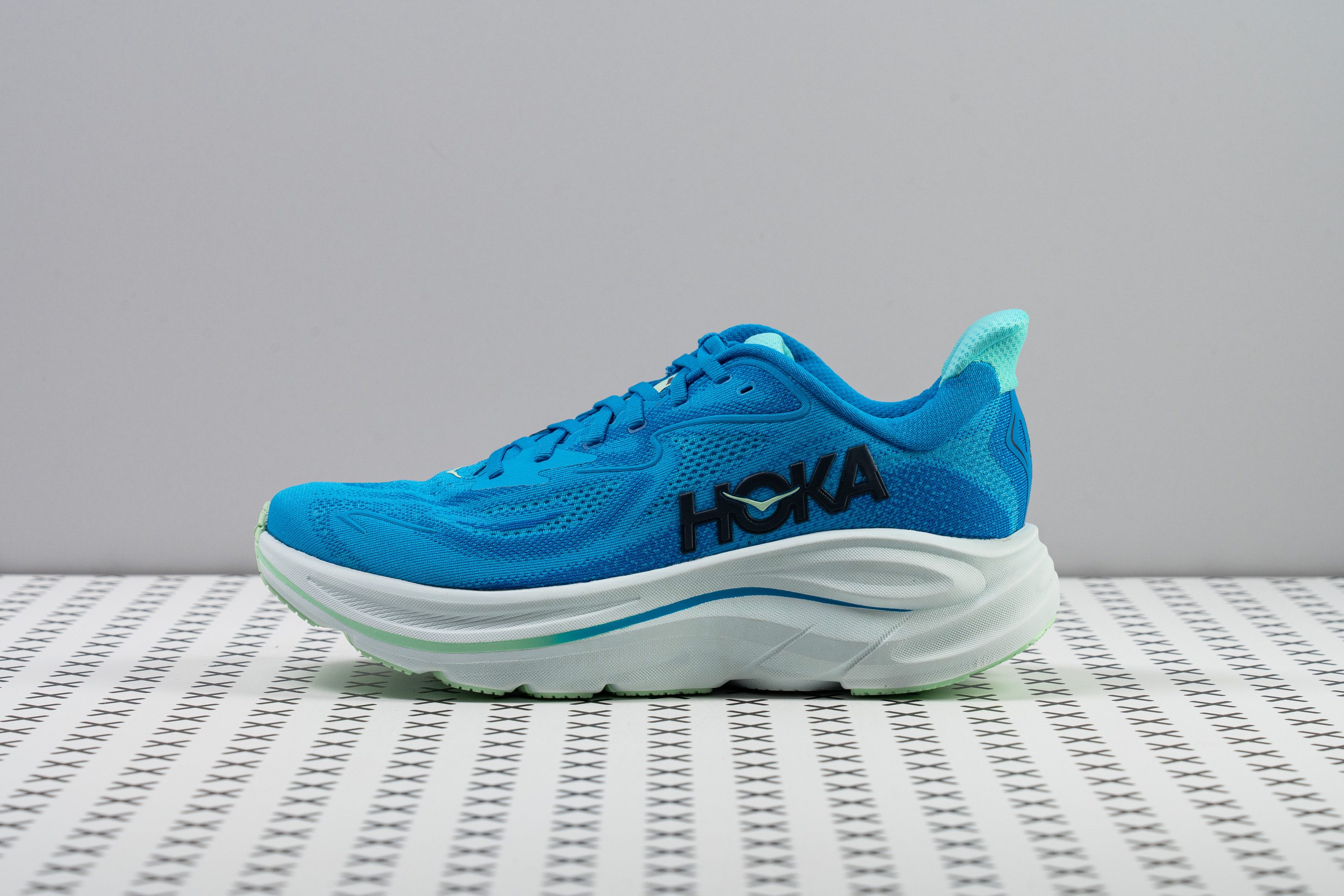
The heel also features a rounded shape designed to support heel strikers better. In our view, this becomes more relevant with the new drop and geometry targeted at that specific group.
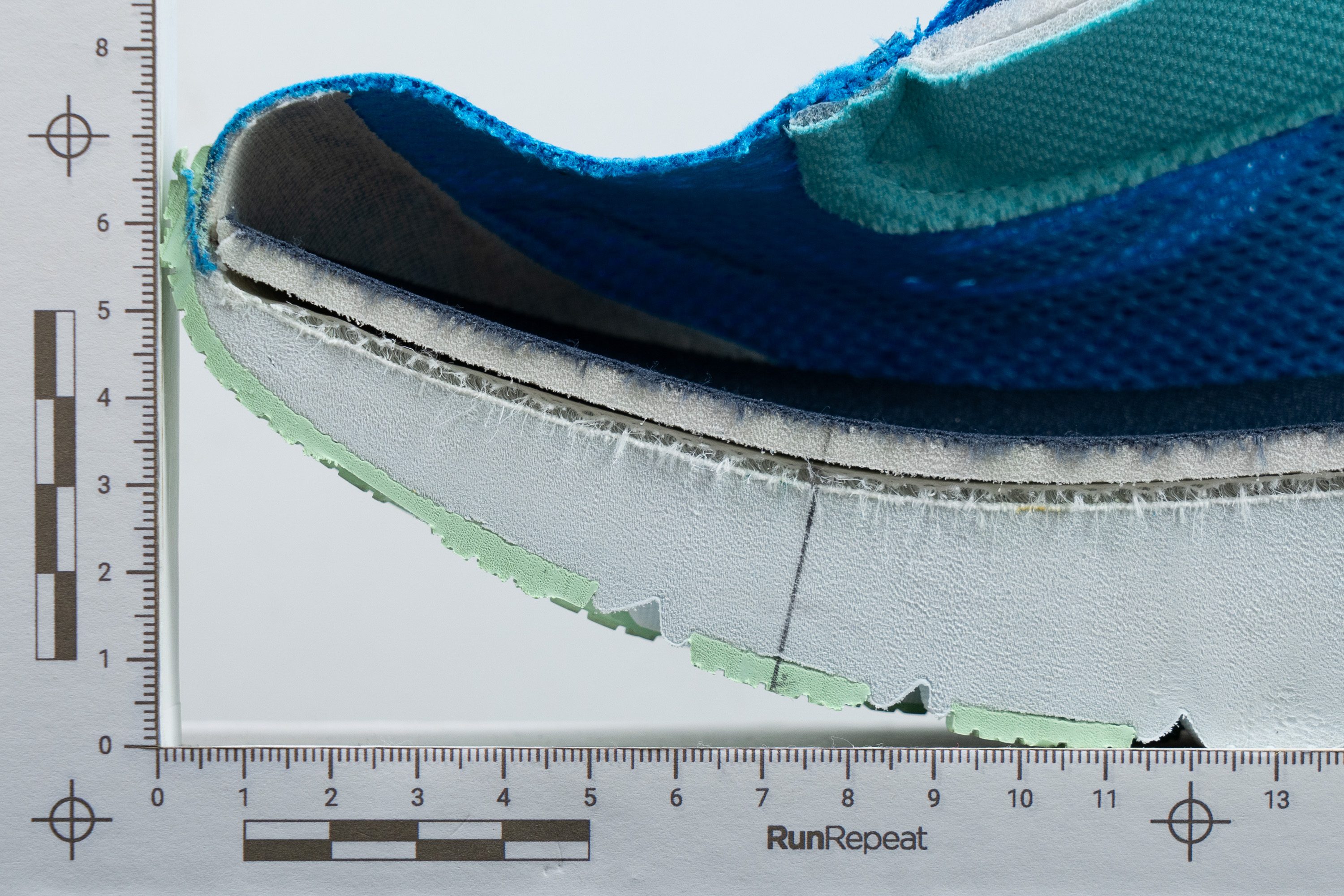
Size and fit
Size
Hoka Clifton 10 fits true to size (126 votes).
Width / Fit
Runners wanted a higher drop, and Hoka gave them just that. At the same time, many loyal users of previous Clifton models were asking for a roomier fit.
We made an exact gel replica of the Clifton 10's interiors and measured it with precision. The first result, taken at the widest point, confirmed a big shift—from a narrow 92.2 mm in version 9 to a generously wide 97.2 mm in version 10.
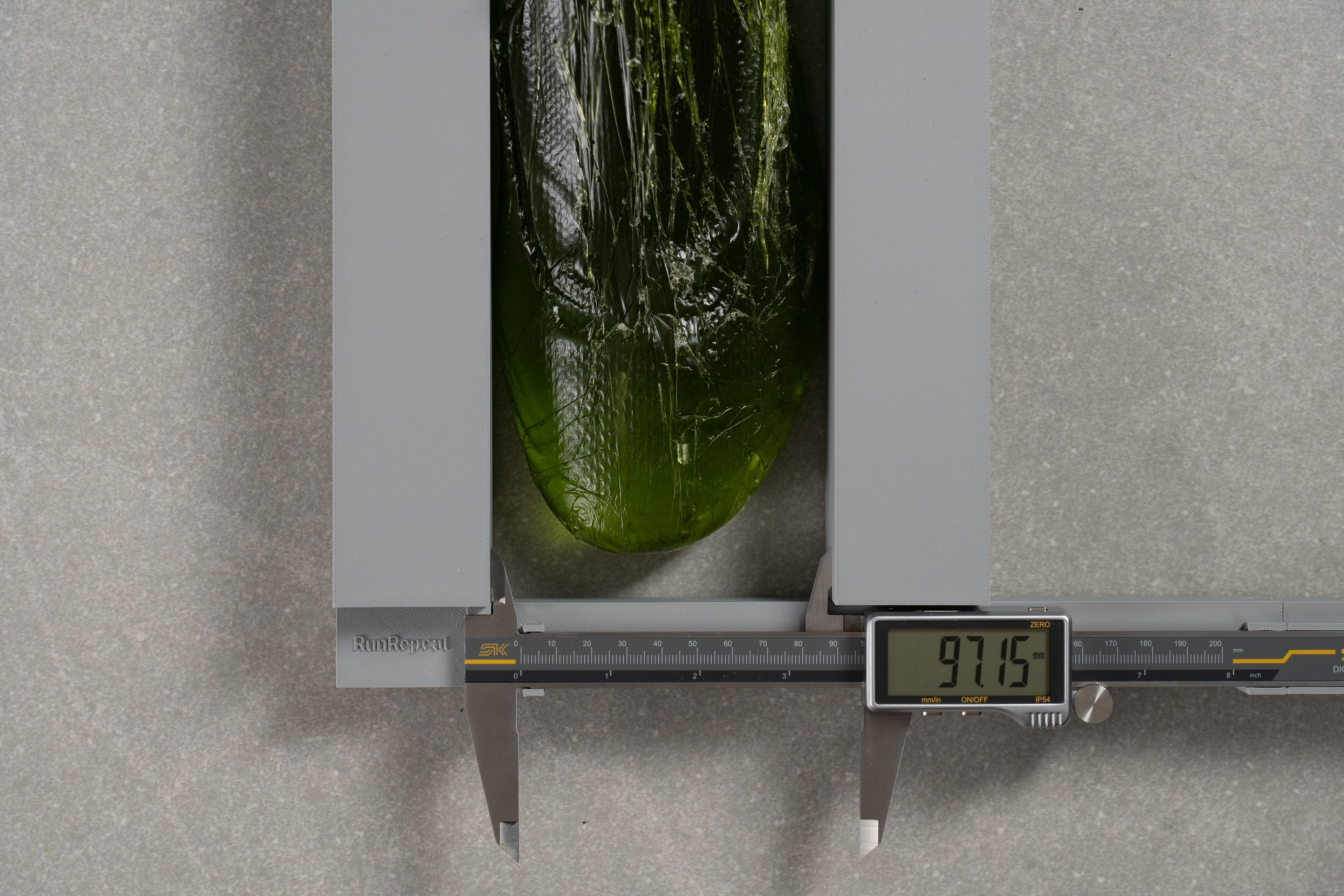
| Hoka Clifton 10 | 97.2 mm |
| Average | 95.1 mm |
Toebox width
But the most noticeable shift in fit doesn't come from the widest part of the shoe—it happens in the big toe zone. Here, we observed a jump from a tight 68.9 mm to a wider (yet still average) 73.1 mm.
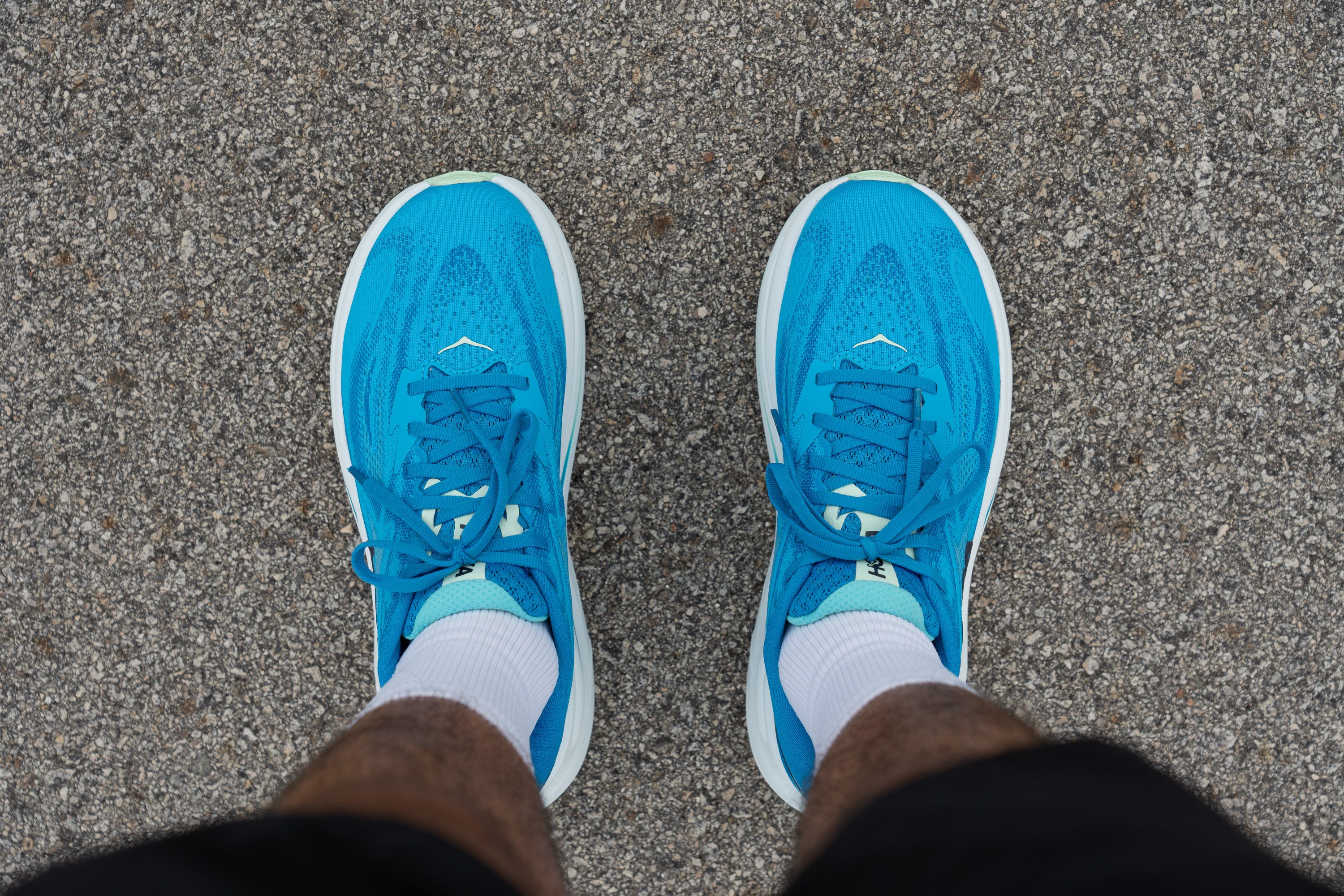
This reshaped area removes the overly-pointy taper, making room for better toe splay. Combined with the previous measurement, we’re convinced that this makes the Clifton a much better pick for long runs.
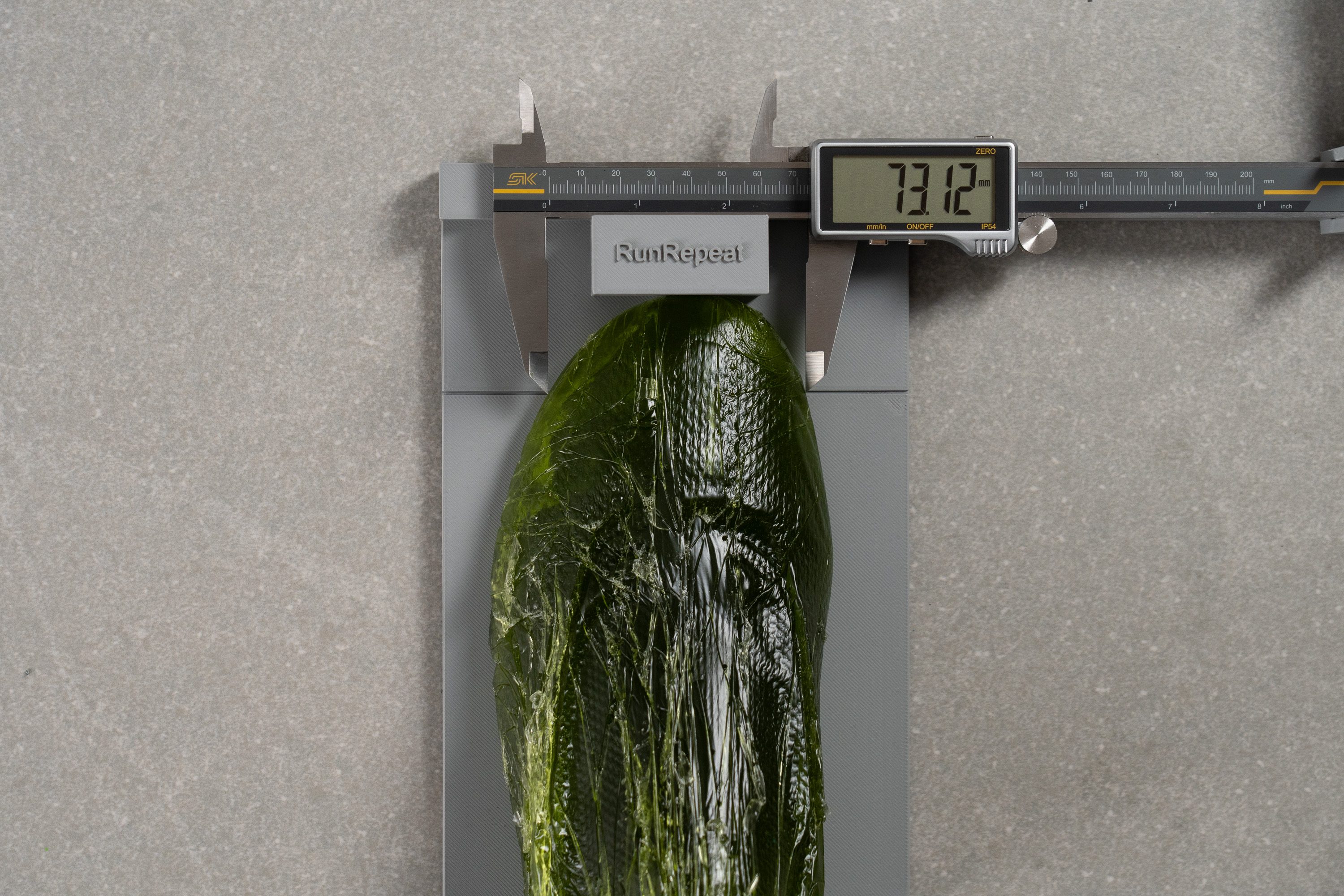
| Hoka Clifton 10 | 73.1 mm |
| Average | 73.3 mm |
Toebox height
On the flip side, Hoka slightly reduced the vertical clearance for the toes.
Still, at 27.3 mm, it sits right around average and should feel fine for the vast majority of runners.
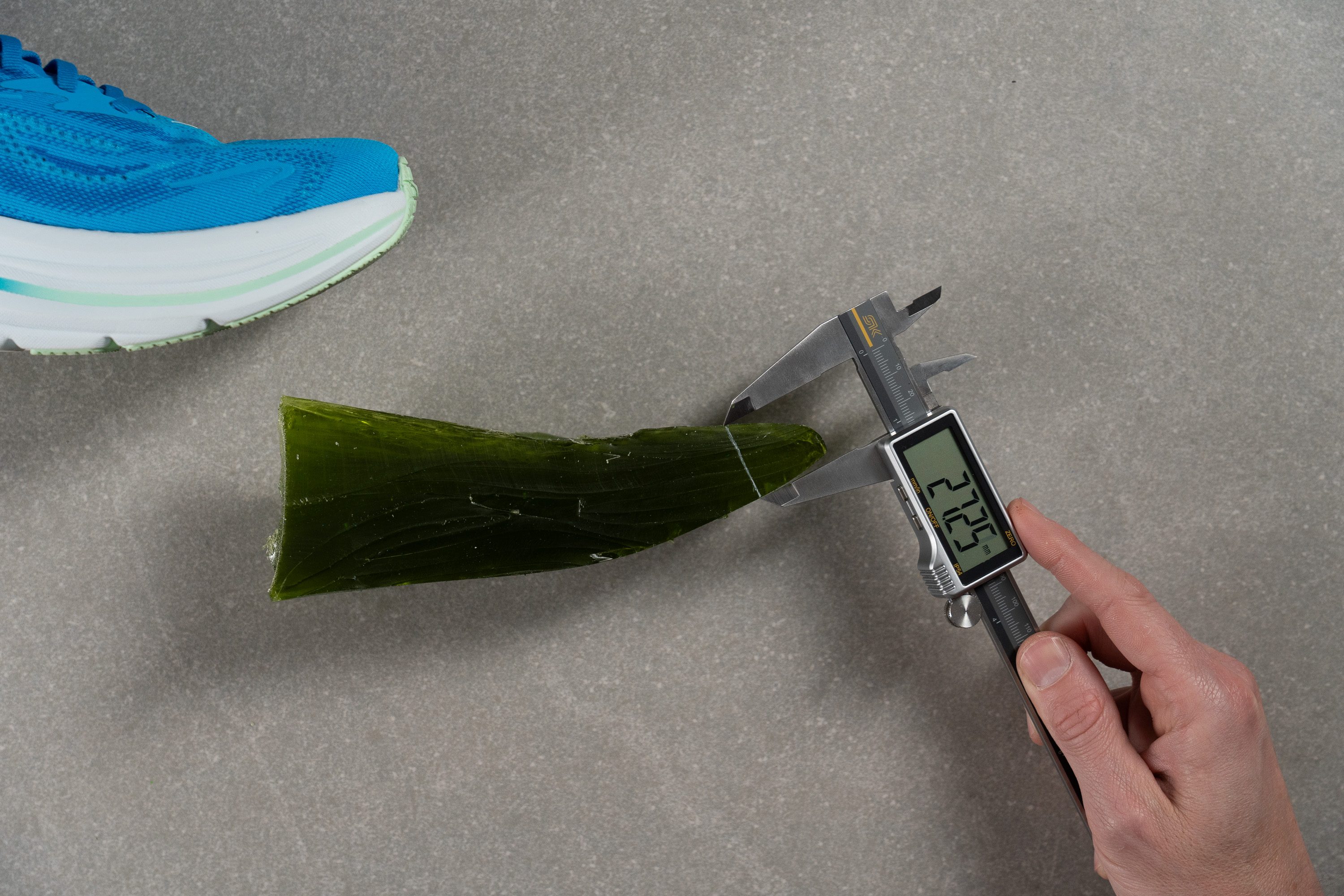
| Hoka Clifton 10 | 27.3 mm |
| Average | 27.1 mm |
Traction / Grip
Traction test
We had major concerns about the Clifton 9’s lack of grip in wet or slippery conditions after it scored 0.33 in our test, and we hoped for a big change in version 10. After testing the new outsole, we discovered a much-improved score of 0.49, putting it firmly in the good grip category.
Now, it delivers solid traction not just on dry pavement but also on wet concrete and dirt roads—making it a reliable pick where the previous version often struggled. And for us, this is a big leap for anyone running in unpredictable weather.
| Hoka Clifton 10 | 0.49 |
| Average | 0.48 |
Outsole design
The outsole design is unmistakably Hoka—featuring green rubber placed over the most abrasion-prone zones. We also noticed a few extra reinforcements across the midfoot and heel, while some sections of the foam remain exposed to keep weight down.
We appreciated the generous amount of well-placed flex grooves, which help the shoe maintain a smooth, easy-going ride even with its skyscraper-high stack. That’s especially helpful for walking or recovery runs where flexibility is more noticeable.
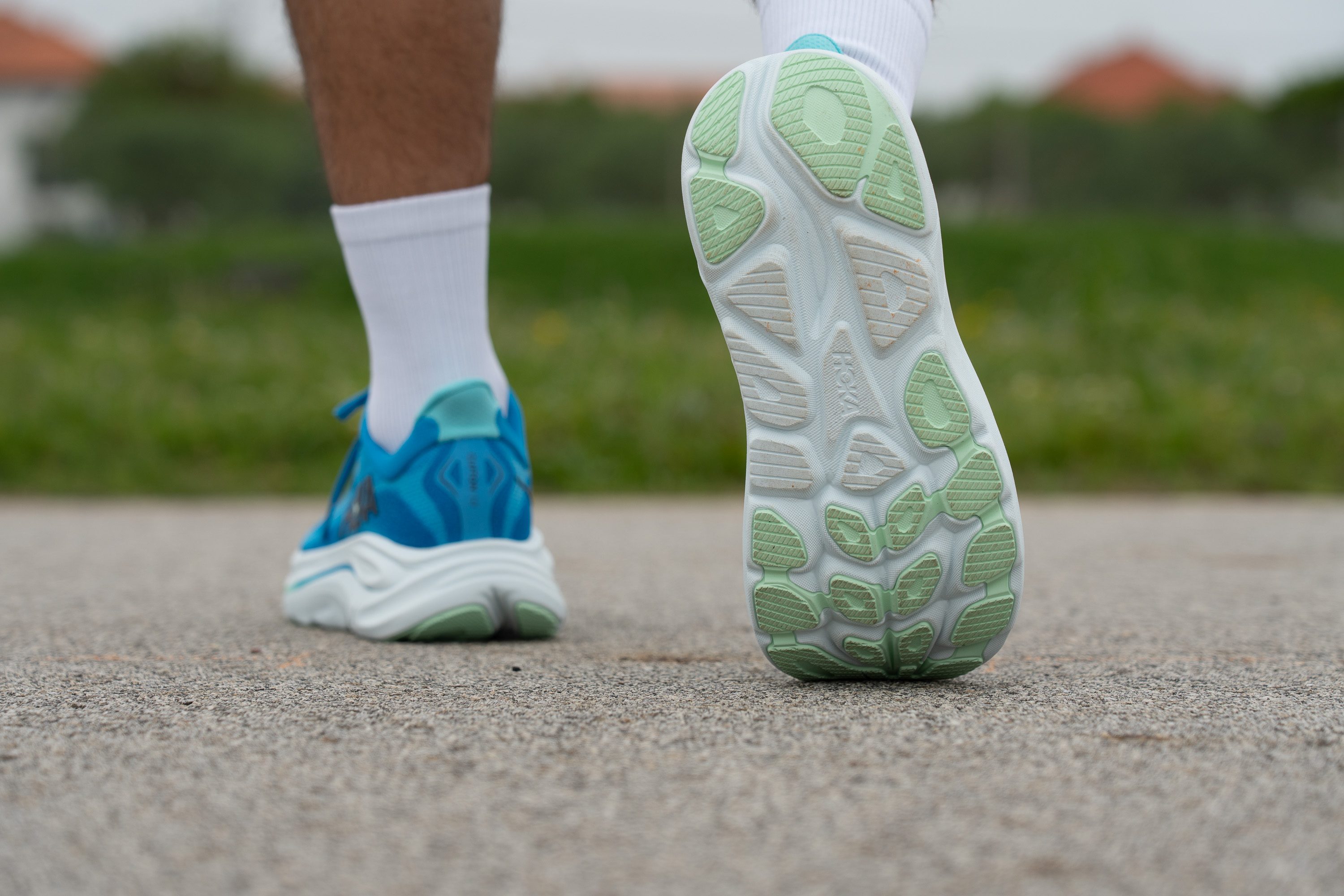
Flexibility / Stiffness
So many runners use their Cliftons for casual wear or all-day comfort that we were a bit concerned about the added stack height.
However, we discovered that the Clifton still delivers a nicely balanced 14.7N of longitudinal flexibility, making it a wearable option for pairing with your favourite jeans or relaxed tracksuit. It also works well as a one-shoe solution for travel, handling everything from city tours to occasional runs.

| Hoka Clifton 10 | 14.7N |
| Average | 15.2N |
Weight
Another big downside of keeping CMEVA foam and skipping a nitrogen-infused EVA upgrade is that adding stack height inevitably means adding weight.
We found that the Clifton 10 is, at 9.7 oz or 275g, 10% heavier than version 9. That may sound minor, but the shift is very noticeable—transforming it from a lightweight daily trainer into an average-weight option. We’re clearly not thrilled about this change.
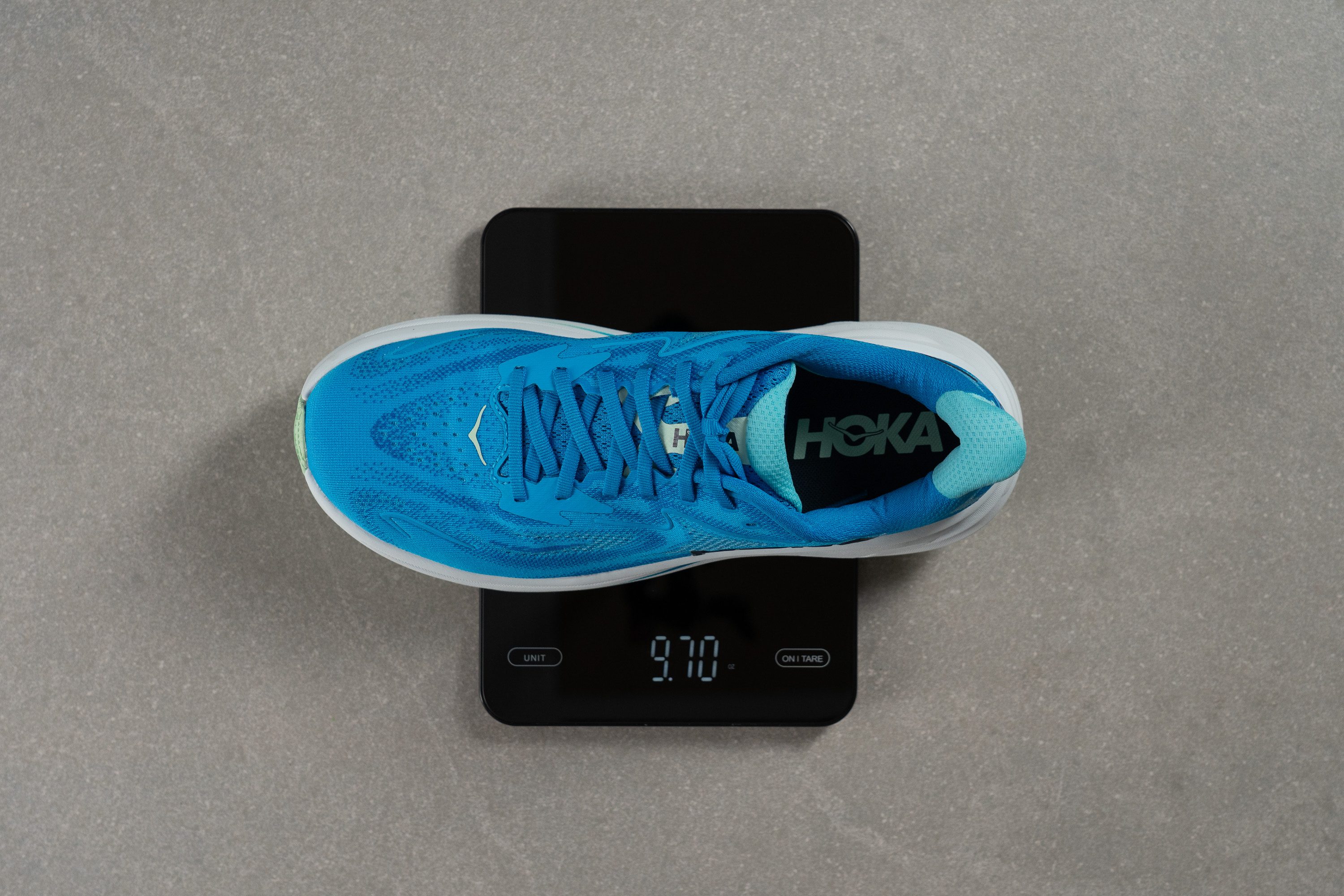
| Hoka Clifton 10 | 9.7 oz (275g) |
| Average | 9.3 oz (264g) |
Breathability
Breathability was one of the areas where we felt Hoka could have pushed things further. The previous version scored 3 out of 5 in our smoke test, and this one stayed exactly the same. That score might not sound bad, and it’s actually decent if you don’t live in sun-scorched climates. But in our view, it would have benefited from a more breathable feel.
We tested the Clifton 10 under the same conditions and confirmed the same 3/5 result. So while airflow is acceptable, it’s not ideal for runners planning to wear this in summer. Thin socks and purchasing a light colorway should help.
We found that Hoka clearly prioritised stability over ventilation. Some areas of the upper are thick, which showed clearly in our light test where hardly any beams passed through.
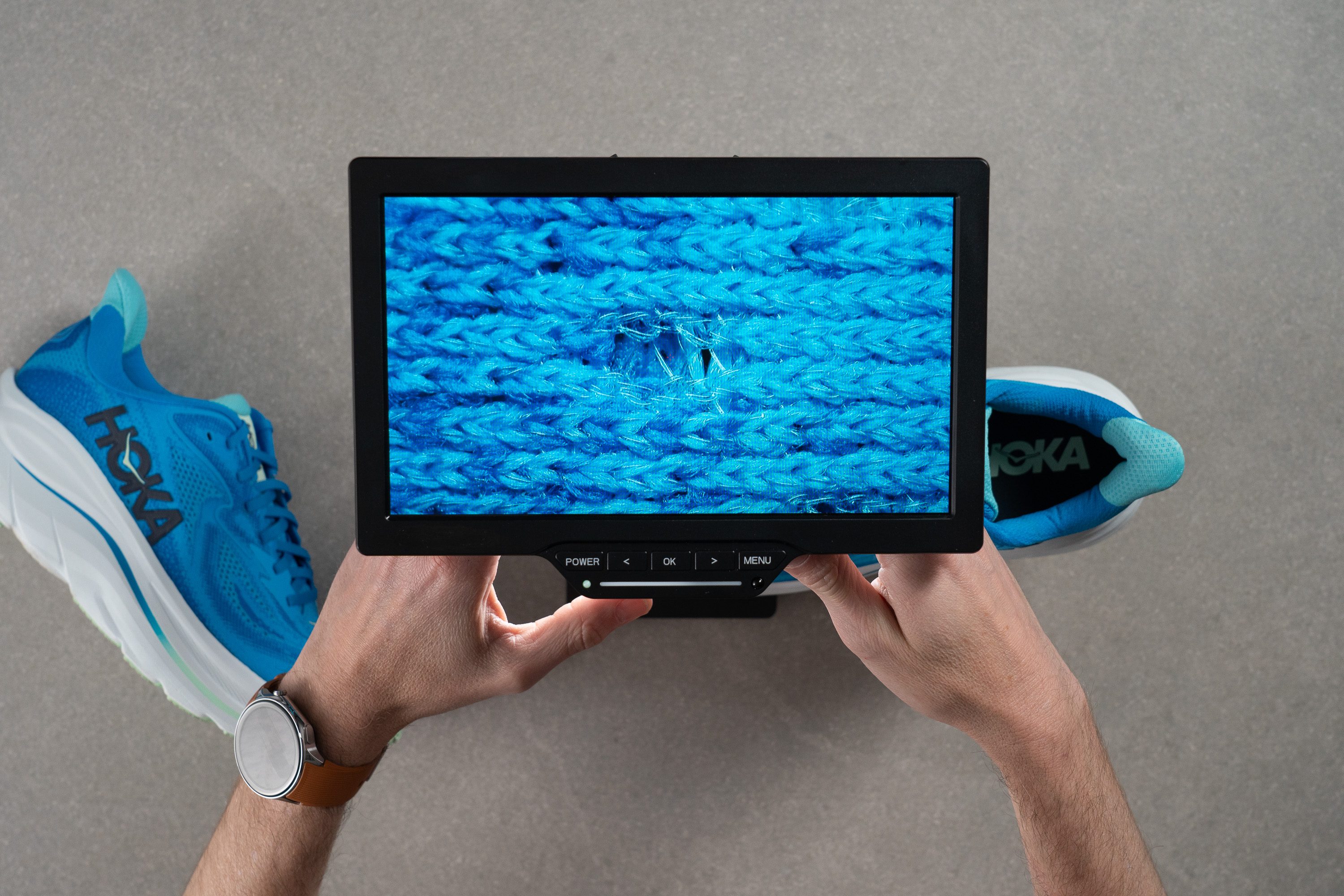
Afterward, to examine the jacquard mesh in detail, we placed it under the microscope.
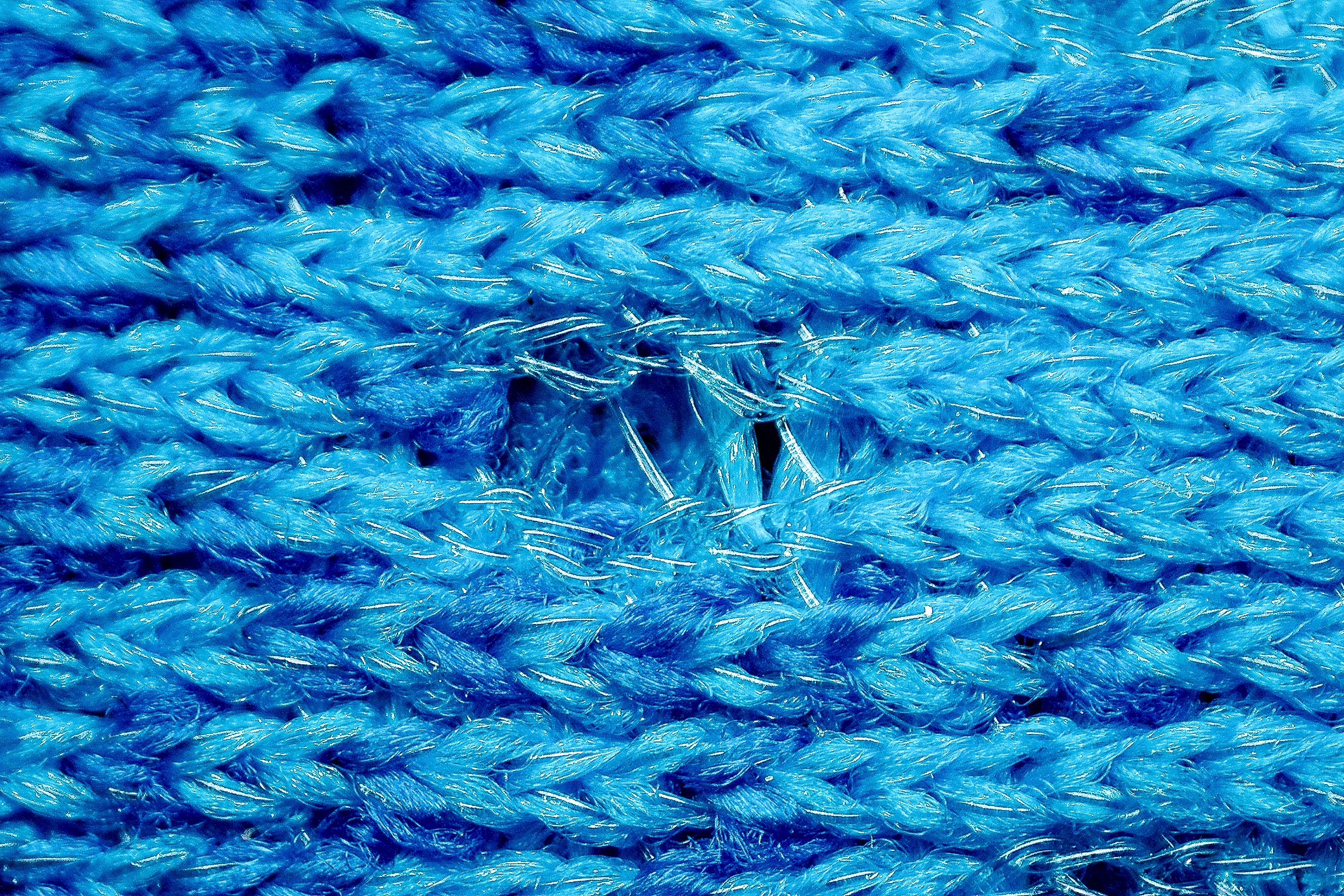
What we discovered was a cleanly-engineered, ultra-durable design that feels robust for the price. However, it's clear the ventilation holes could be more open.
Still, the upper really feels comfort-driven and solid, definitely well-suited for daily use. While we would’ve liked just a bit more breathability, we wouldn’t trade its pillow-like padding or solid construction for it either.
| Hoka Clifton 10 | 3 |
| Average | 3.7 |
Stability
Lateral stability test
It’s fair to wonder whether the towering foam stack of this update compromises stability. But through our lab evaluation, we discovered more than enough support to satisfy most neutral runners without raising concerns.
Thanks to its high-rise midsole sidewalls and extra-wide midfoot area—a signature of this series—we believe that even mild pronators can benefit from the Clifton 10.
Torsional rigidity
We discovered that the higher stack brought a clear jump in torsional rigidity going all the way up to 5 out of 5, on par with carbon-plated supershoes like the Hoka Rocket X 2. This stiffened build makes it a bit less appealing for those eyeing the Clifton 10 for easy runs or even casual wear.
| Hoka Clifton 10 | 5 |
| Average | 3.5 |
Heel counter stiffness
The heel counter in the Clifton 10 is generously padded for comfort and feels very close to what we see in daily trainers. Unsurprisingly, we gave it a 3/5—right in the average.
| Hoka Clifton 10 | 3 |
| Average | 2.9 |
Midsole width - forefoot
While the Clifton 10 gained extra stack height, the midsole stayed moderately wide without a lateral expansion. And why? If Hoka had gone that route, this model would’ve stepped 100% into Bondi territory.
We measured 116.9 mm in the forefoot. Still, the Clifton's stability comes from the broad midfoot, a signature feature we’ve seen since the first model in 2014.
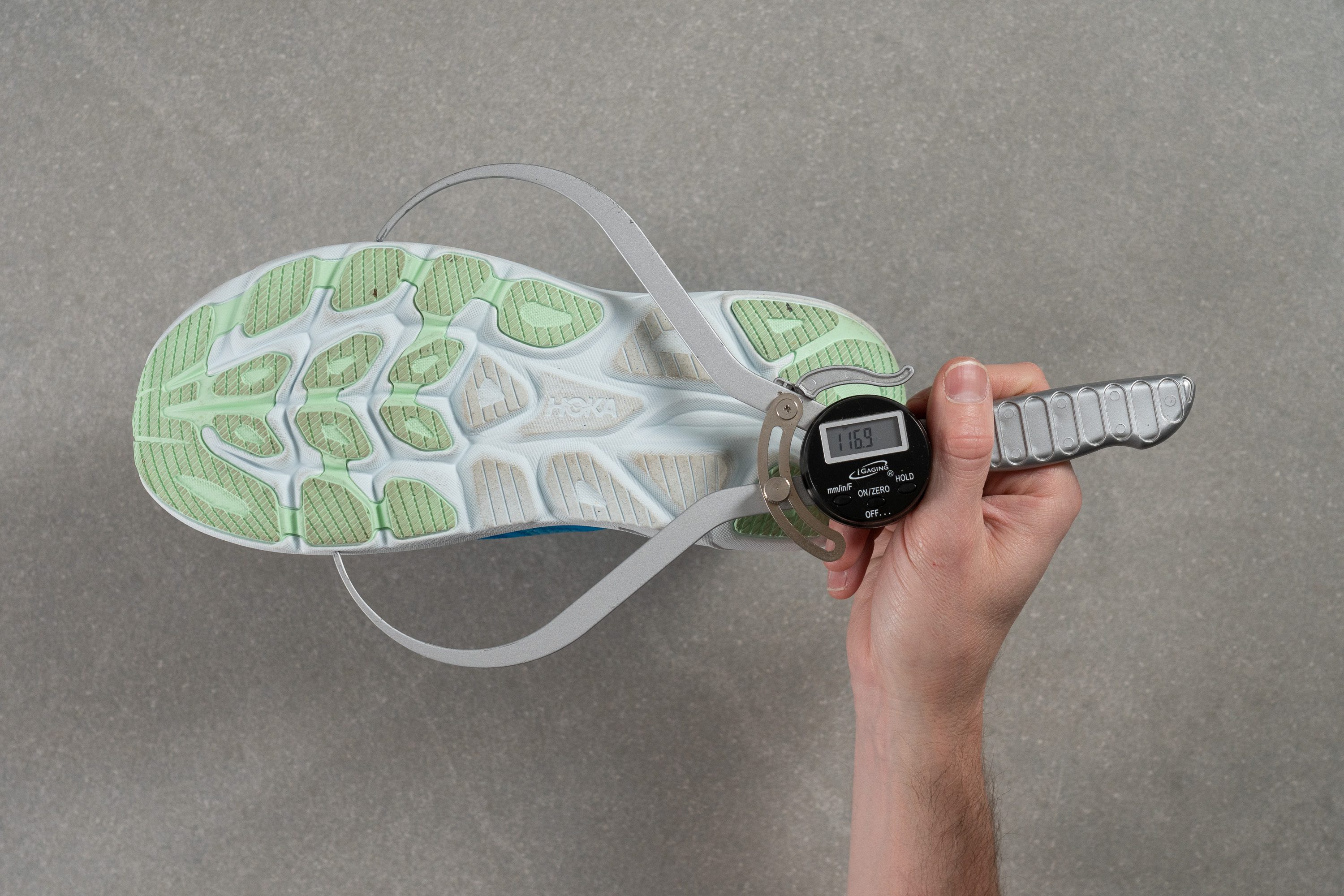
| Hoka Clifton 10 | 116.9 mm |
| Average | 114.3 mm |
Midsole width - heel
Same feel in the heel area—slightly wider than average at 97.8 mm, yet it stays under the 100 mm mark unlike some mega-cushioned options. We believe that this mid-range width offers a reasonable balance.
During our runs, the Clifton 10 it proved stable enough in the heel without pushing the shoe into clunky territory. That makes it a proportioned design that still feels somewhat agile.
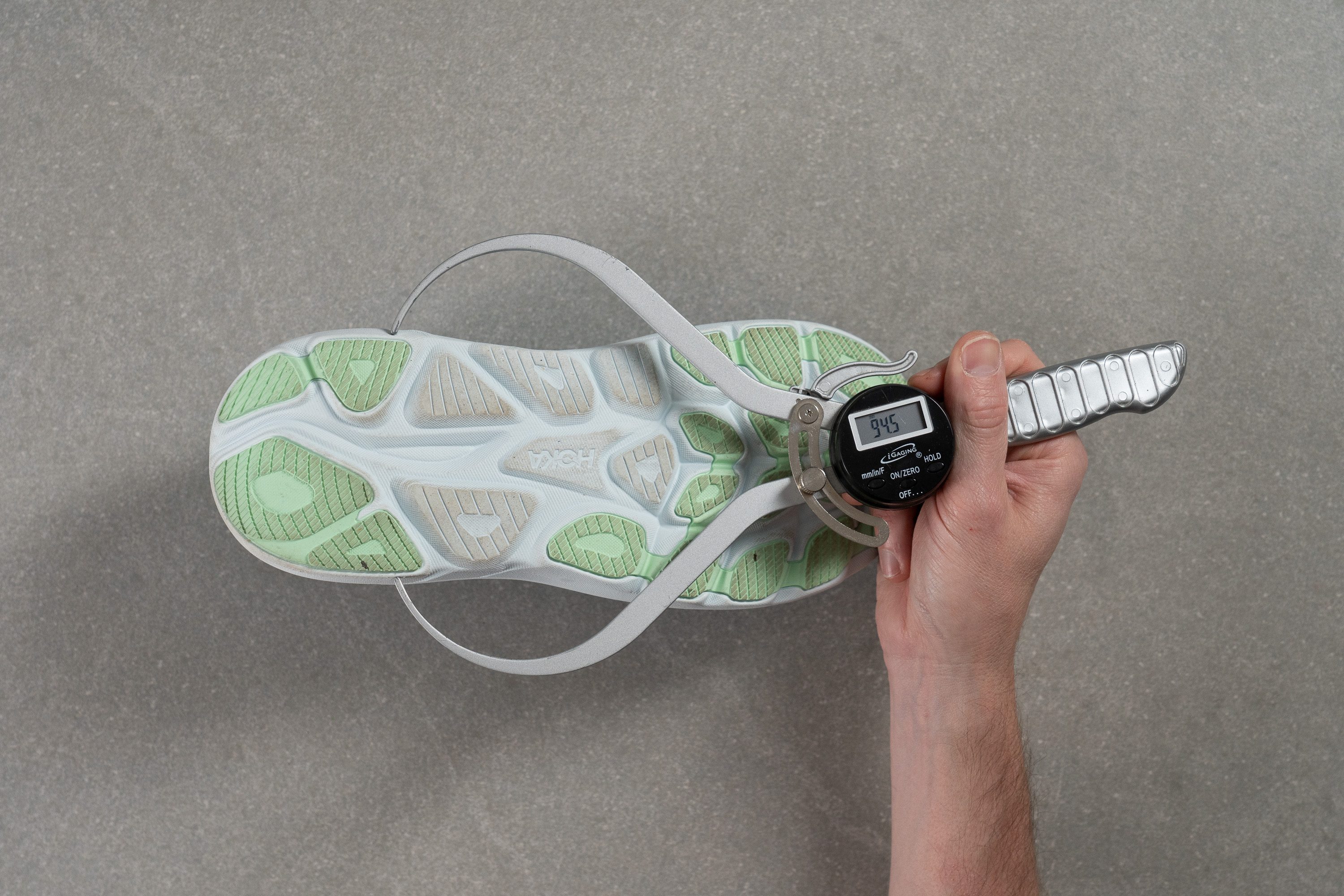
| Hoka Clifton 10 | 94.5 mm |
| Average | 90.7 mm |
Durability
Toebox durability
As we found before, it’s definitely not a super-breathable upper, but it brings something valuable to the table—durability. We tested it with our Dremel and it held up really well, earning a solid 4/5.
| Hoka Clifton 10 | 4 |
| Average | 2.6 |
Heel padding durability
The heel padding was stellar, earning a perfect 5/5—our highest rating for this test. So anyone concerned about premature wear here can relax and confidently wear their favorite socks without worry.
| Hoka Clifton 10 | 5 |
| Average | 3.4 |
Outsole hardness
The outsole design is unmistakably Hoka—featuring green rubber placed over the most abrasion-prone zones. We also noticed a few extra reinforcements across the midfoot and heel, while some sections of the foam remain exposed to keep weight down.

We appreciated the generous amount of well-placed flex grooves, which help the shoe maintain a smooth, easy-going ride even with its skyscraper-high stack. That’s especially helpful for walking or recovery runs where flexibility is more noticeable.
As for grip and hardness, we measured the rubber at 79.3 HC, which is pretty much average. This safe decision compound strikes a nice balance between traction and decent durability for daily wear.
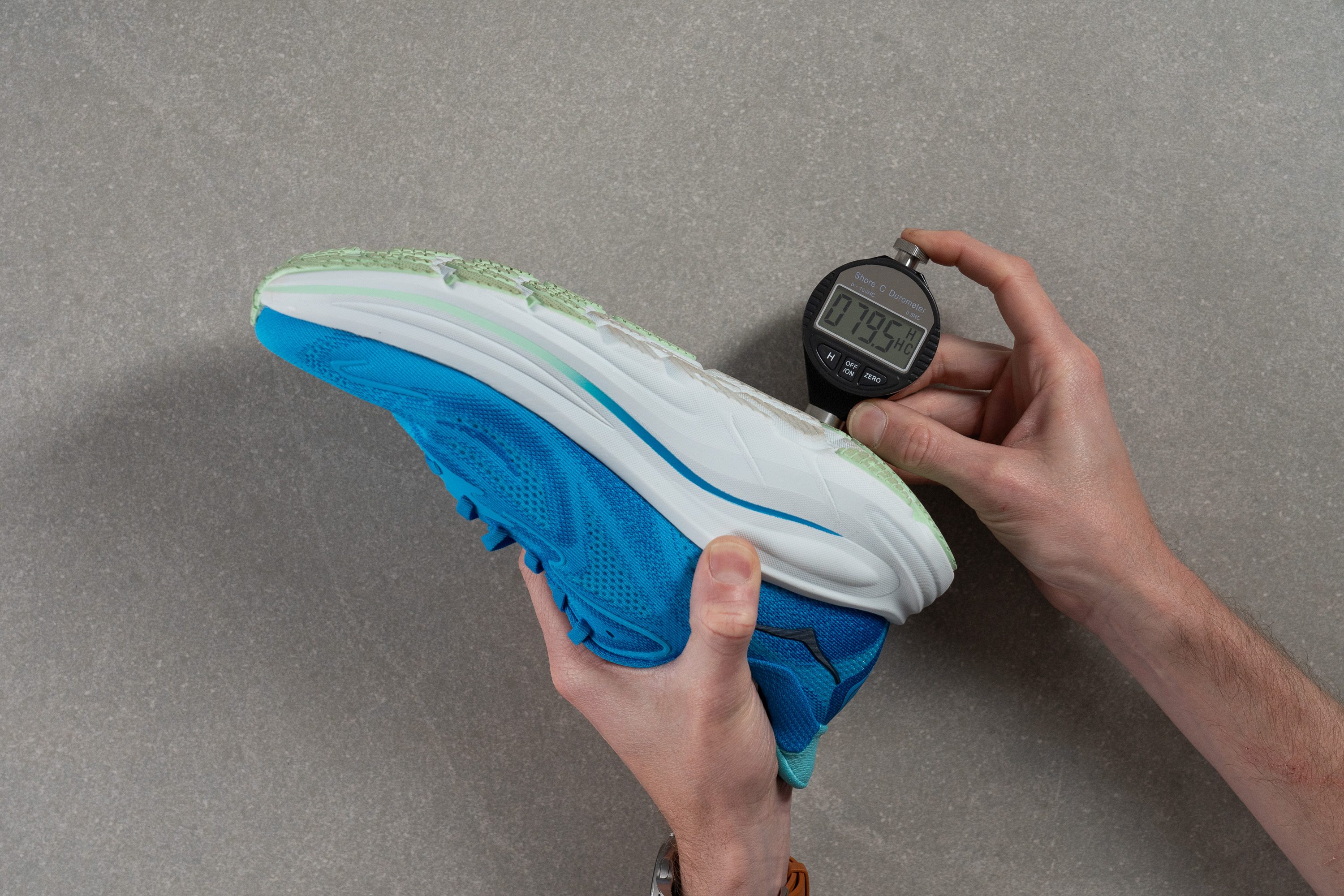
| Hoka Clifton 10 | 79.3 HC |
| Average | 79.2 HC |
Outsole durability
We had a strong feeling the outsole would hold up well, but of course, we fired up the Dremel for the third and final time. The rubber compound showed just 1.0 mm of wear—a solid outcome for a daily trainer!
| Hoka Clifton 10 | 1.0 mm |
| Average | 1.1 mm |
Outsole thickness
Good news for those who go hard on outsoles: the Clifton 10 packs 3.6 mm of rubber, making premature wear highly unlikely.
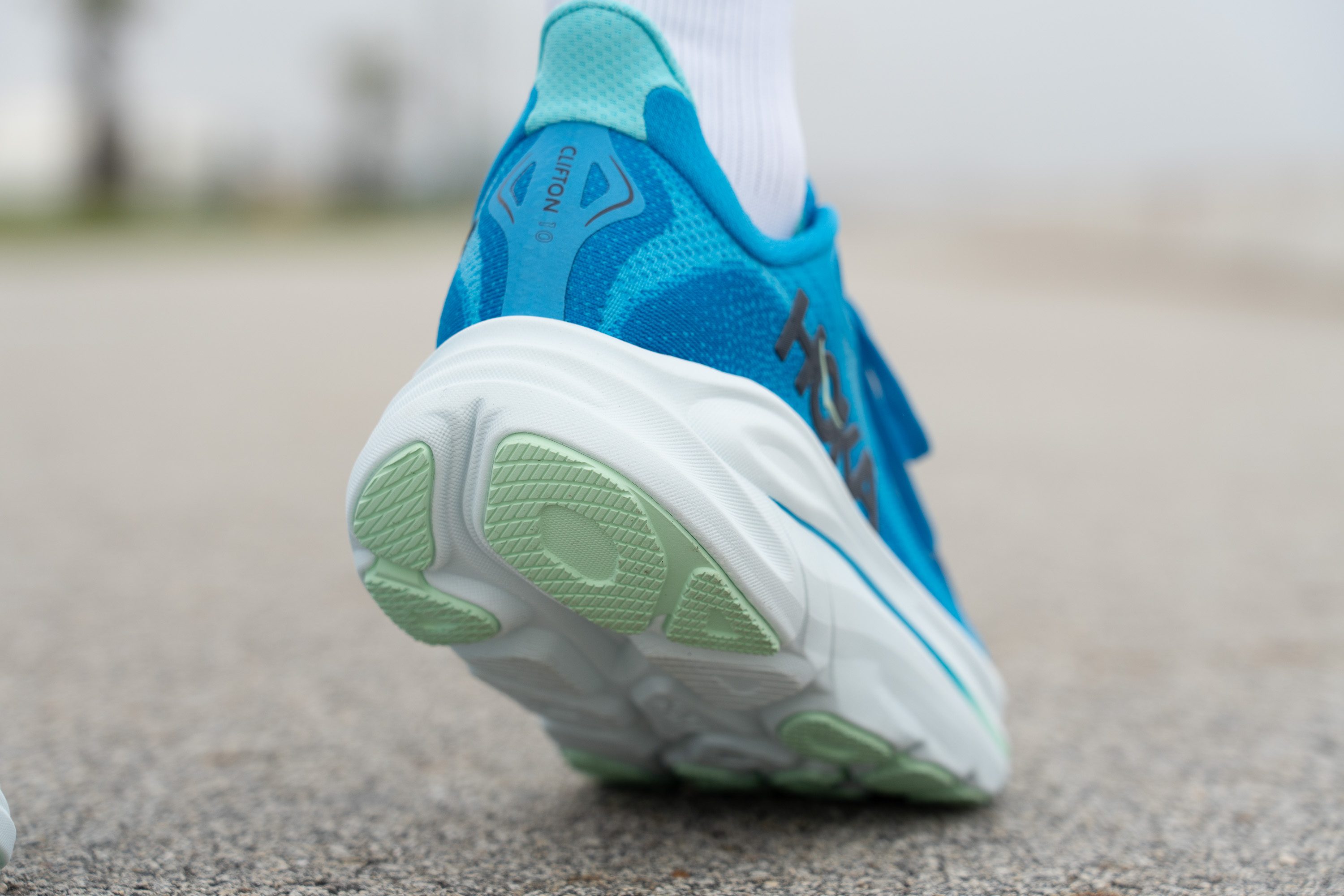
Once again, Hoka takes the ultra-safe route, even if it adds a bit of extra bulk.
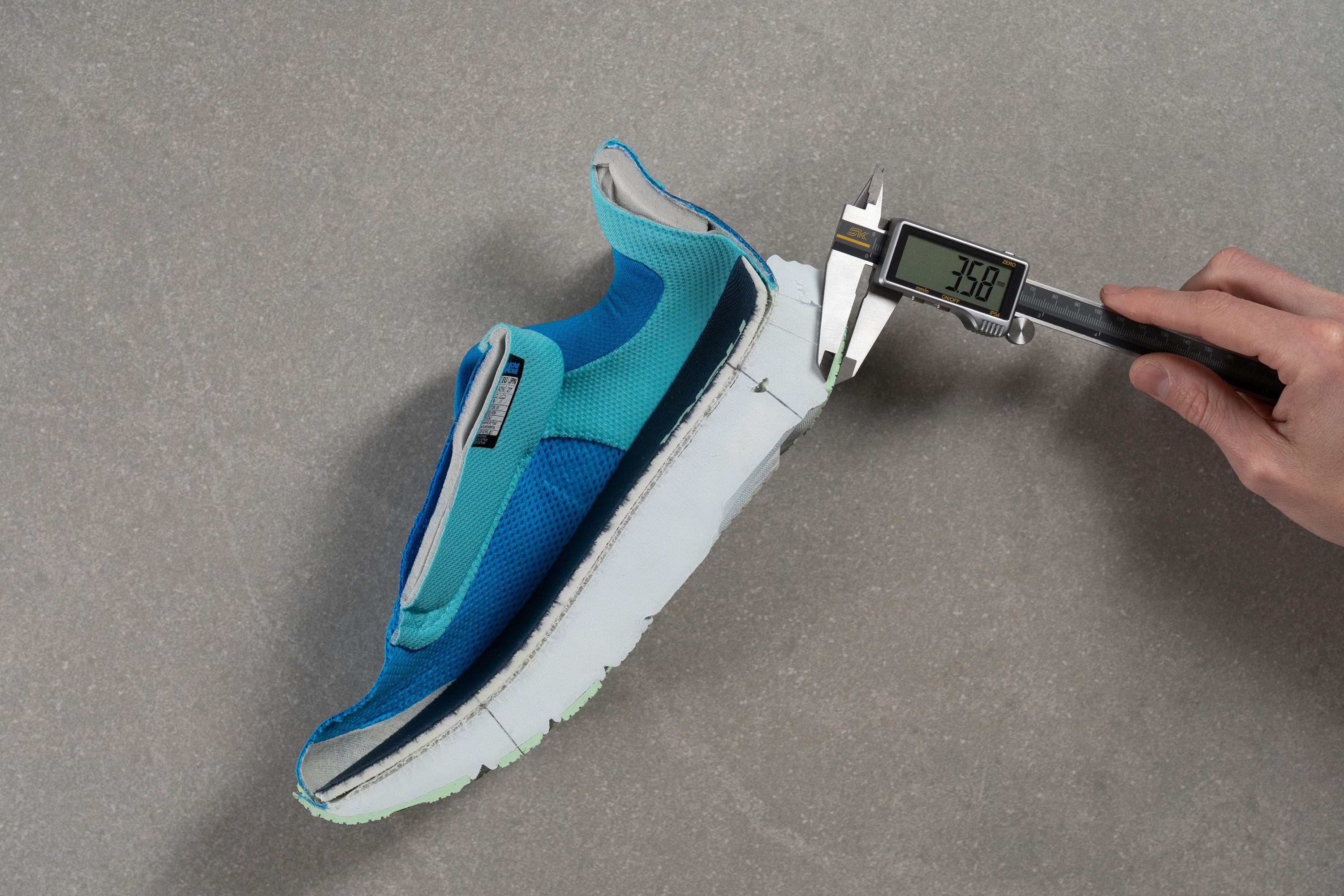
| Hoka Clifton 10 | 3.6 mm |
| Average | 3.2 mm |
Misc
Insole thickness
The insole is a plain EVA design with an average 4.8 mm thickness. It feels minimal and offers no standout features—just a standard, no-frills footbed that gets the job done.
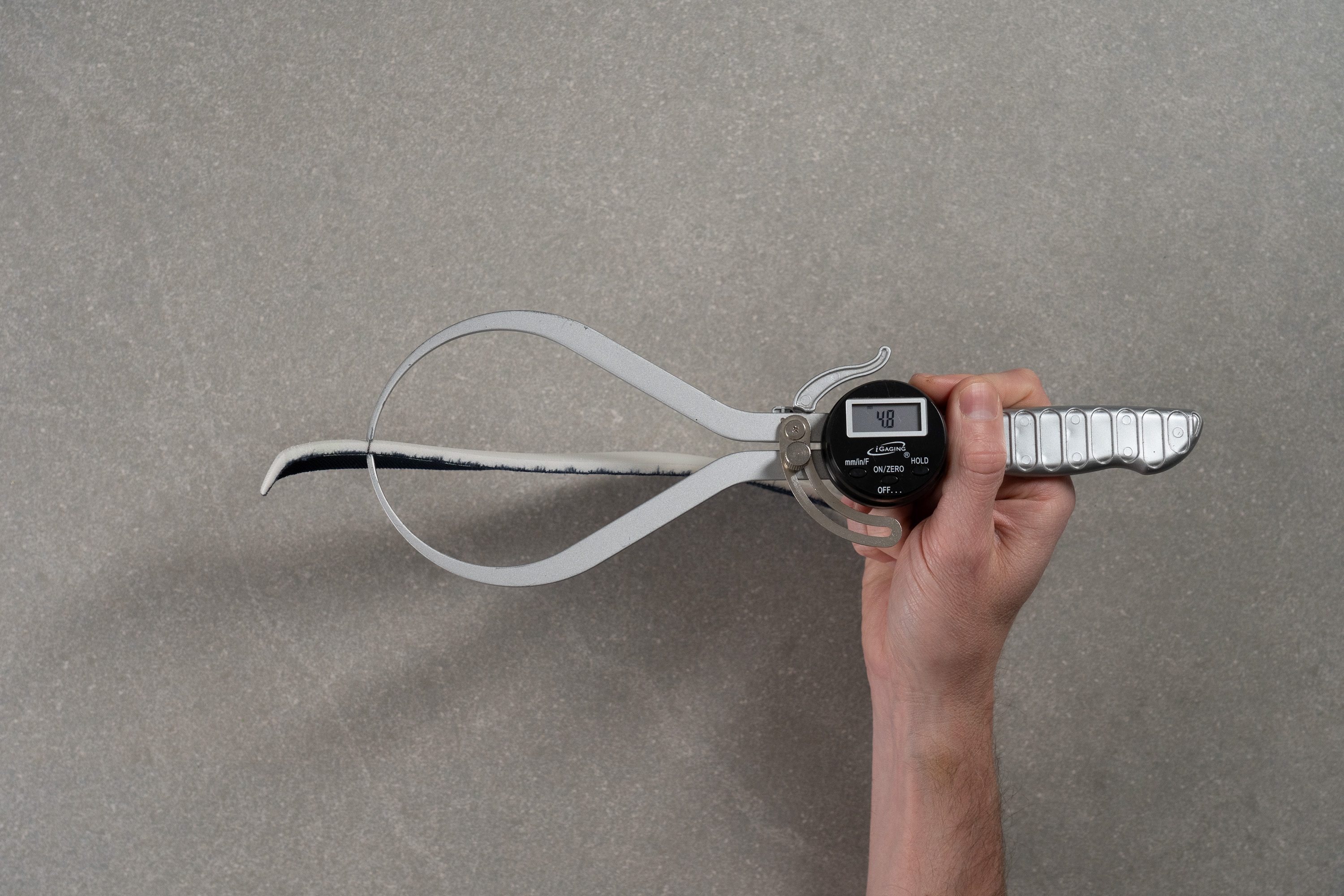
| Hoka Clifton 10 | 4.8 mm |
| Average | 4.5 mm |
Removable insole
The Clifton 10 features a removable insole, and with its average width and moderate thickness, you can replace it with most third-party insoles if you prefer a personalised fit or added support.
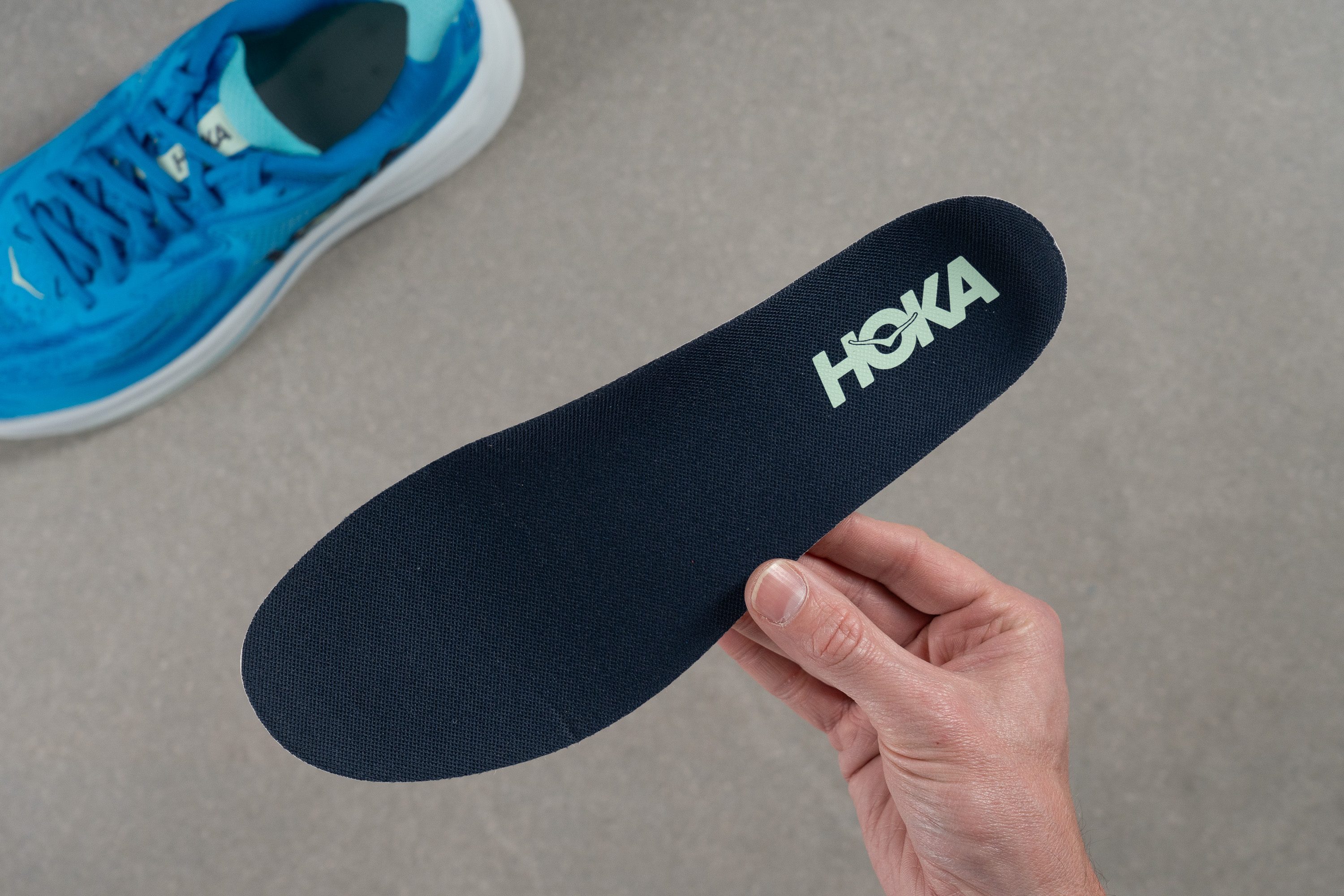
| Hoka Clifton 10 | Yes |
Midsole softness in cold (%)
We placed the Clifton 10 in the freezer for 20 minutes and retested the foam. It became 19% firmer—a respectable outcome for an EVA-based shoe and better than what we usually see with this material.
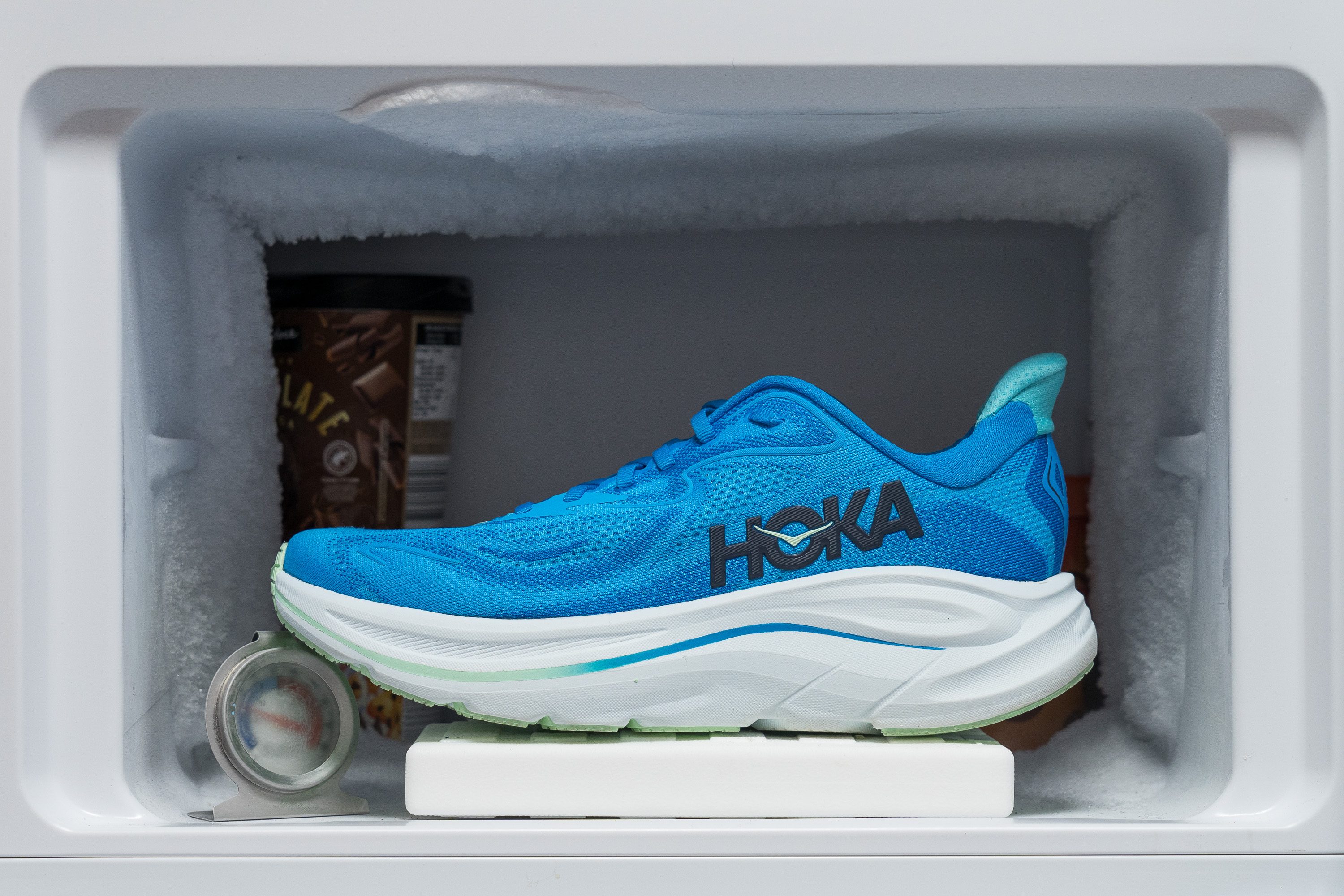
| Hoka Clifton 10 | 19% |
| Average | 24% |
Reflective elements
A thoughtful detail from Hoka is the addition of reflective elements across the entire shoe, improving safety for early morning or nighttime runs.
We still recommend wearing hi-vis clothes at night, but these touches are a welcome bonus that adds some peace of mind.
| Hoka Clifton 10 | Yes |
Tongue padding
From the first moment we handled the shoe, it became clear that Hoka prioritised plush comfort over featherlight weight in the Clifton 10. The tongue alone is a great example of this comfort-focused decision.
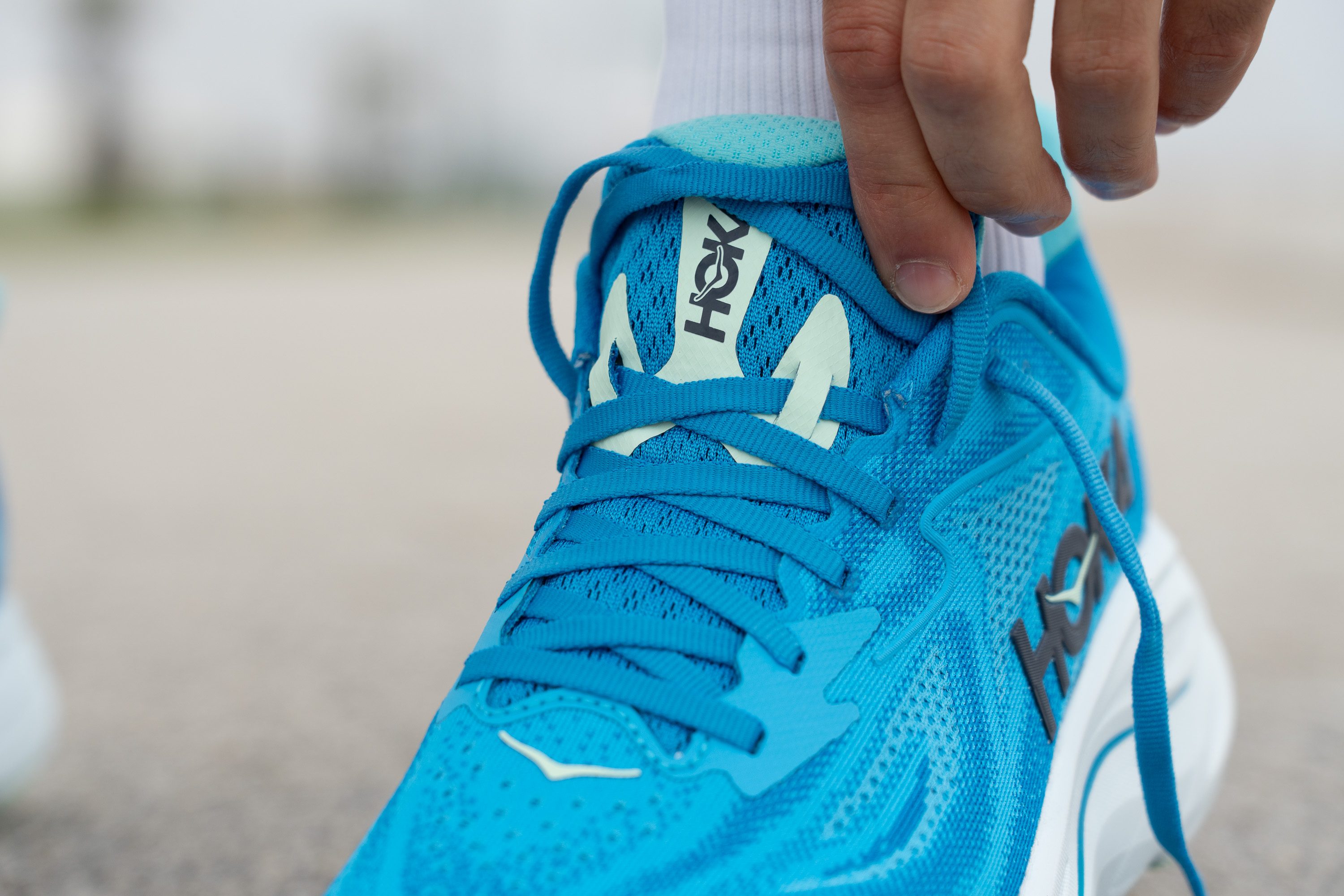
We discovered a pillow-like tongue that measured 7.6 mm with our digital callipers. This thickness helps relieve pressure on the instep—especially during long runs where thinner designs often fall short.
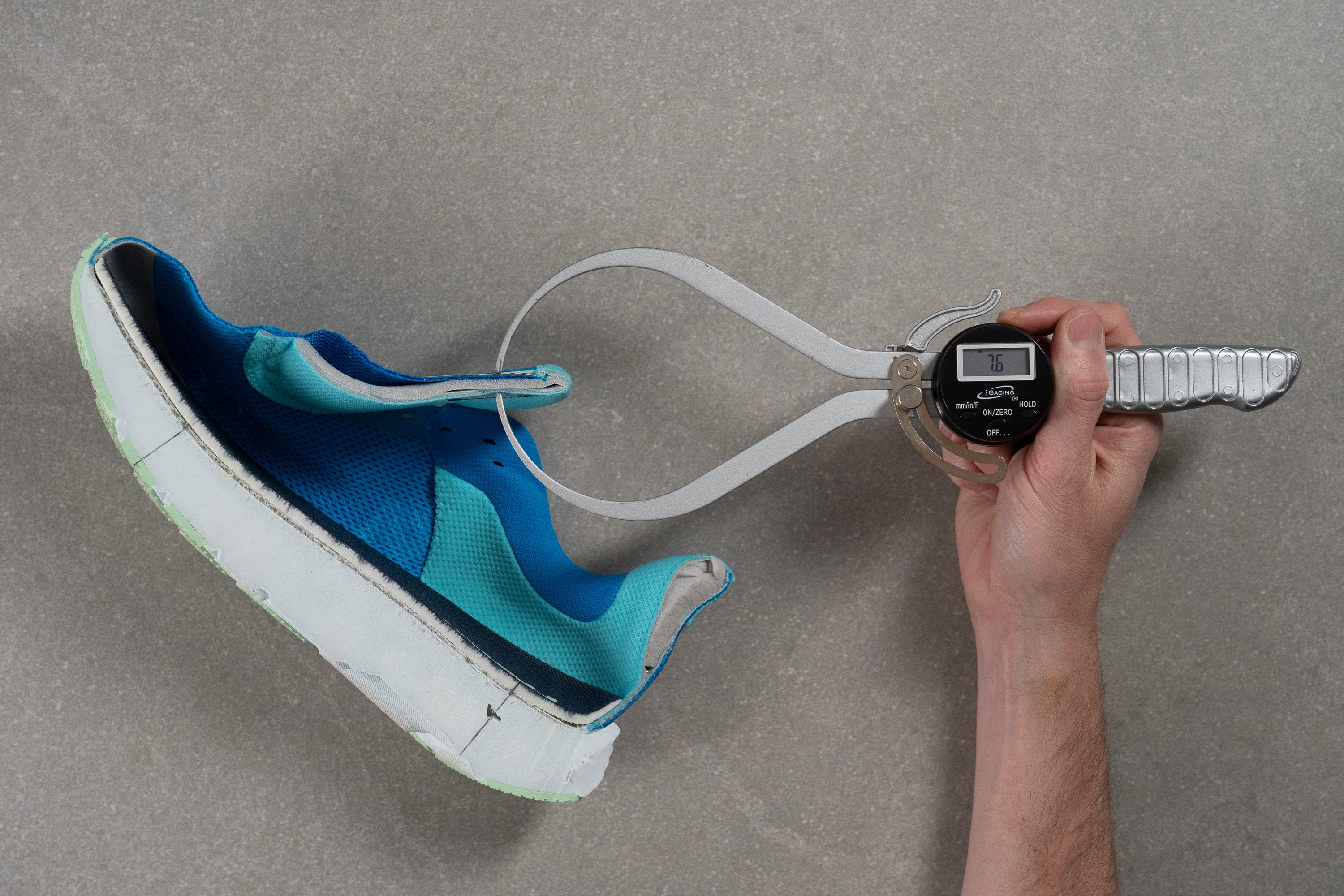
| Hoka Clifton 10 | 7.6 mm |
| Average | 5.8 mm |
Tongue: gusset type
Despite the slight price bump, there are some step backs in the Clifton 10—and this is one of them. The tongue switches from a semi-gusseted setup to a non-gusseted one, and not even the dual lace loops can convince us that this was a positive change.

| Hoka Clifton 10 | None |
Price
The price of the Clifton 10 sees a small increase over its predecessor—which makes sense after 2+ years and some inflation—and now sits around or slightly above most daily trainers. We think it’s fair within Hoka’s lineup, though somewhat high for the foam provided.
| Hoka Clifton 10 | $150 |
Heel tab
The signature extended heel collar seen on most Hoka training shoes remains untouched. It helps reduce pressure on the Achilles tendon and makes it easier to slip the shoe on thanks to its grab-and-go design.
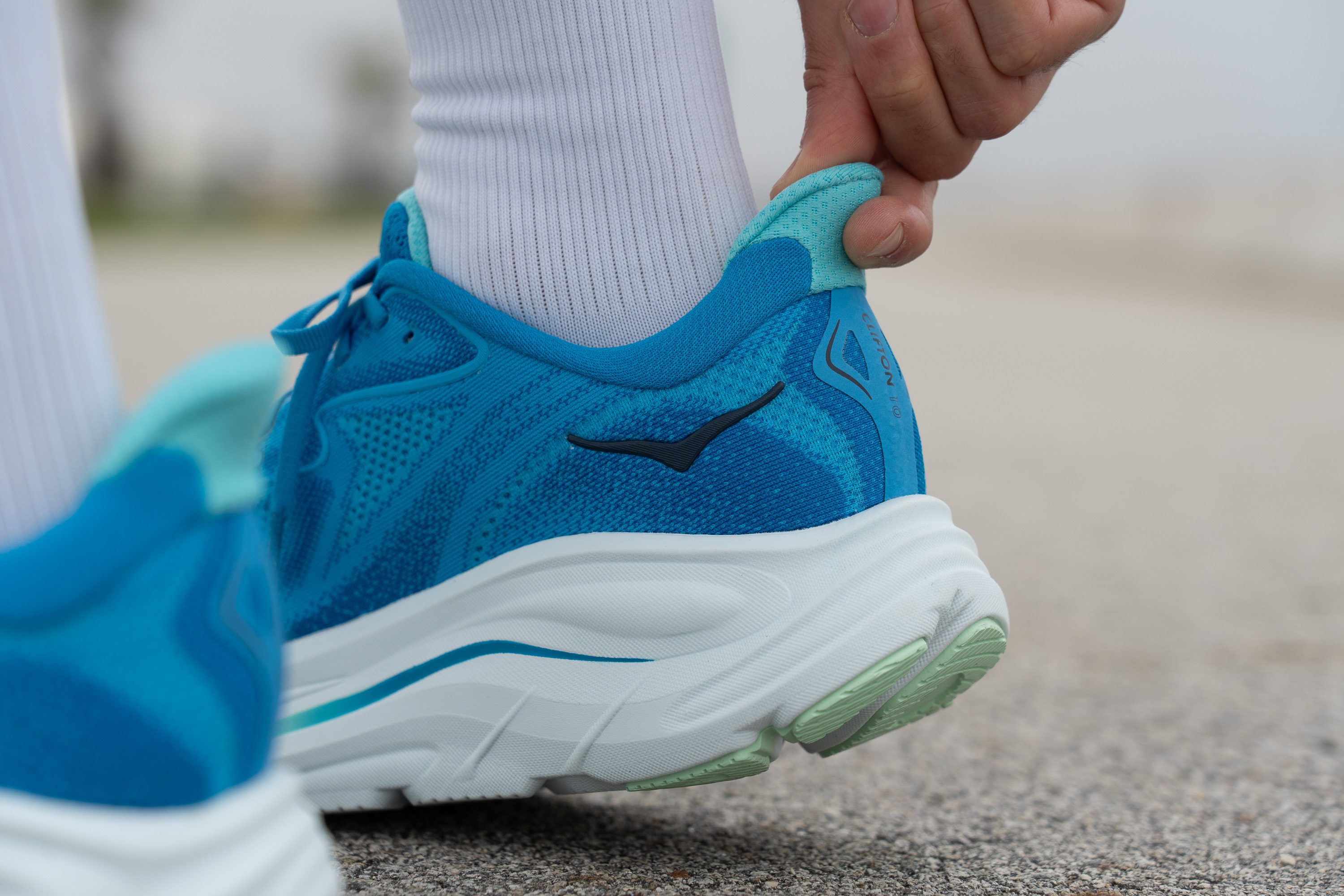
| Hoka Clifton 10 | Extended heel collar |

